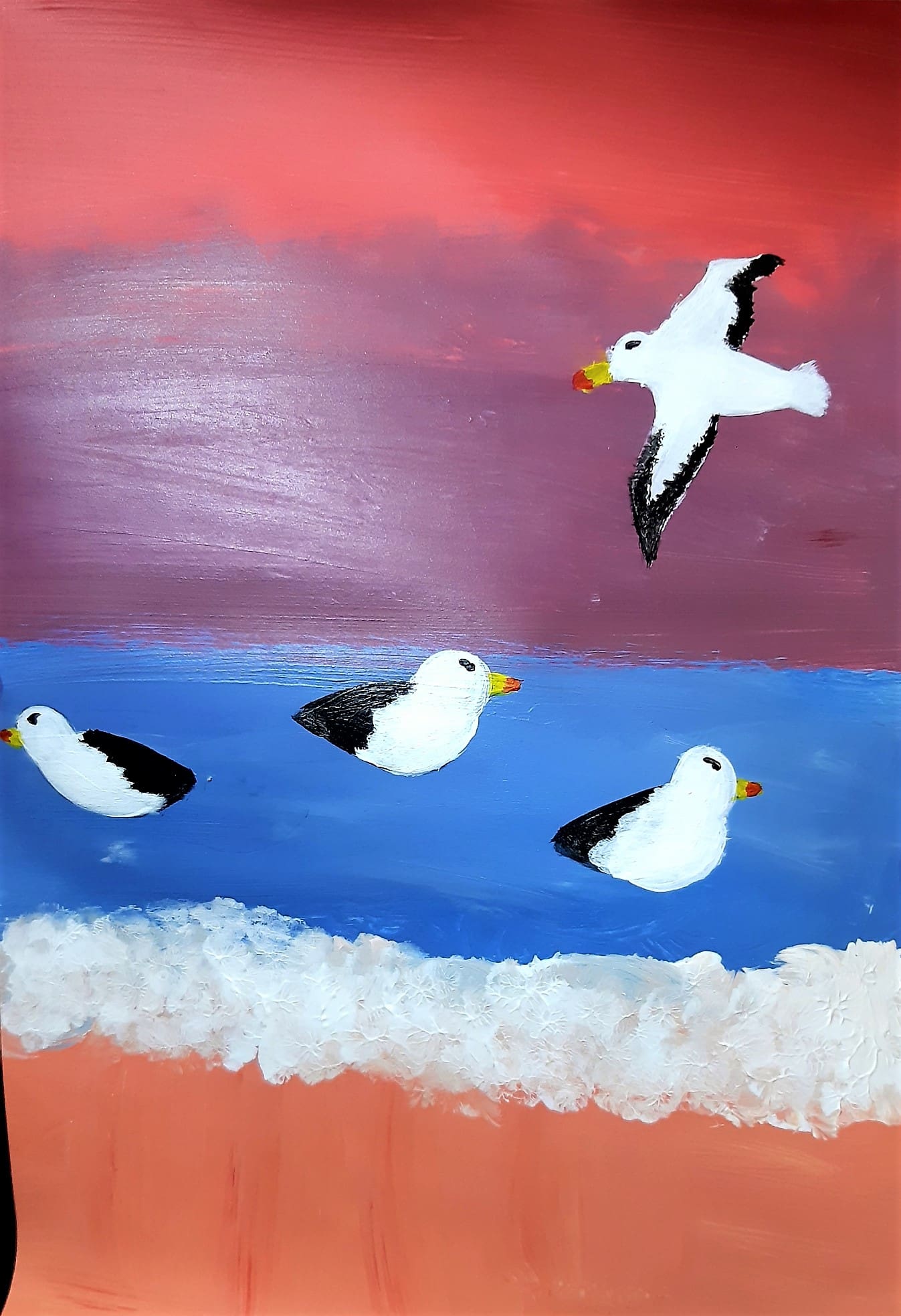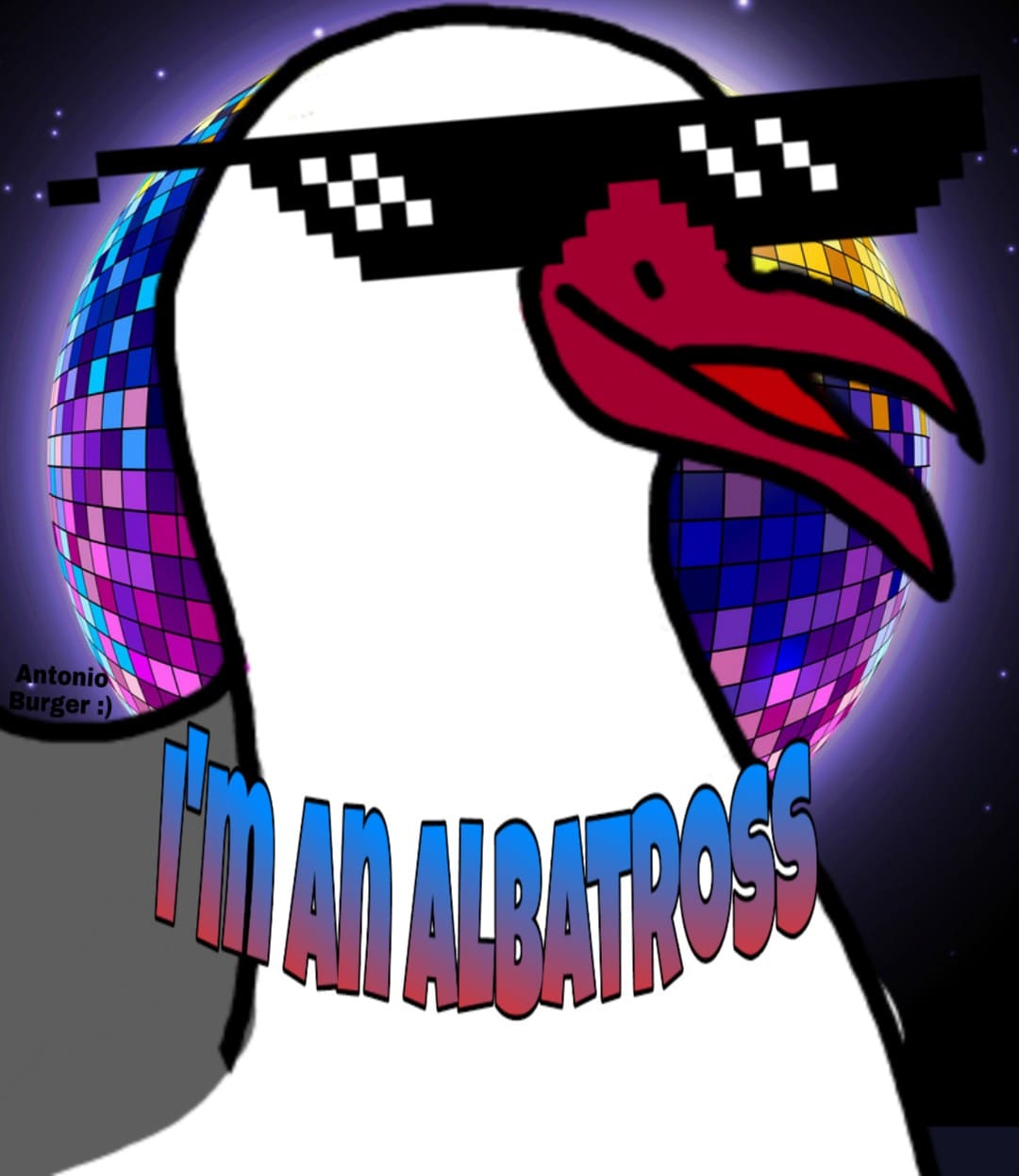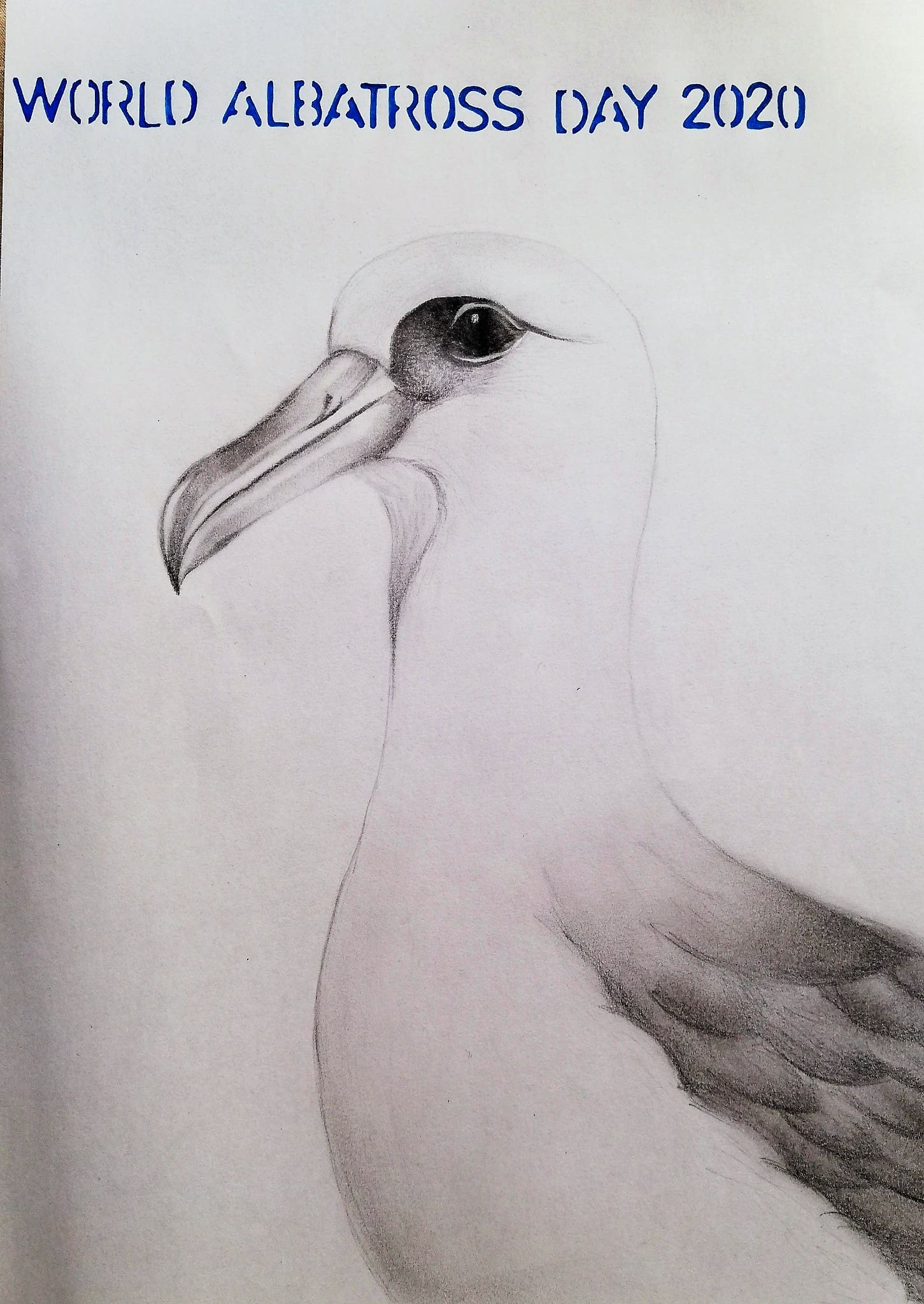
by Ria Olivier | Dec 11, 2020 | Announcement, Research, SANAP, SCAR, Science


| Research Project | Affiliation | Principal Investigator |
| SAMOC-SA | Bayworld Centre for Research and Education | Lamont, T DR |
| Contemporary and Future Drivers of CO2 and Heat in the Southern Ocean | CSIR - Natural Resources and the Environment | Nicholson, S DR |
| Seasonal Iron speciation in the Southern Ocean, from open ocean environments to naturally fertilized sub-Antarctic Islands (Marion and Gough Islands) | Department of Environmental Affairs | Mtshali, TN DR |
| Avian scavengers as indicators of recovery of an island biota | Nelson Mandela University | Connan, MA DR |
| SANAE HF radar | South African National Space Agency (SANSA) | Kosch, MJ Prof |
| Polar Space Weather Studies | South African National Space Agency (SANSA) | Lotz, SI DR |
| The Digital SA Agulhas II - Flagship for Vessel 4.0 | Stellenbosch University | Bekker, A PROF |
| Antarctic Legacy of South Africa | Stellenbosch University | Olivier, M Ms |
| Signal Processing and Control of a long-range Unmanned Surface Vehicle for Cetacean Detection in the Antarctic and Southern Seahttps://www.ee.sun.ac.za/djjversfeld/ | Stellenbosch University | Versfeld, DJJ PROF |
| SEAmester-South Africa's Floating University | University of Cape Town | Ansorge, IJ PROF |
| Parallel cycling of nitrogen and iron in the upper Southern Ocean: implications for biological CO2 drawdown and global ocean fertility | University of Cape Town | Fawcett, SE DR |
| Influence of physical and biogeochemical processes on the Mechanical properties of Antarctic Sea Ice | University of Cape Town | Rampai, T |
| Landscape and climate interactions | University of Fort Hare | Nel, W PROF |
| Observing Dawn in the Cosmos | University of KwaZulu-Natal | MOODLEY, K PROF |
| Comparative microbial ecology of pan-Antarctic soils | University of Pretoria | COWAN, DA PROF |
| Marion Island Marine Mammals in Changing Environments: Individual Heterogeneity and Population Processes | University of Pretoria | de Bruyn, PJN PROF |
| Africa, Antarctica and the Arts | University of Pretoria | Lavery, CM DR |
| Enhanced insights regarding the ecology, evolution and function of marine microbiomes | University of Pretoria | Makhalanyane, TP PROF |
| Ross seal ecology, behaviour and physiology in a changing environment | University of South Africa | McIntyre, T DR |
| | |
See more detail of project here. This schedule will be update on the SANAP website under research in January 2021.

by Ria Olivier | Nov 30, 2020 | Current Event, Marion Island, Research, SANAP, Science
During September, the Department of Environment Forestry and Fisheries(DEFF) approved an International wildlife documentary series to be filmed on Marion Island. The film crew (Plimsoll Productions) together with scientists from South Africa left for Marion Island.







 The Marion Overwintering team organised a Boot Throw Competition and a farewell for the Plimsoll Productions film crew John and Joe.
The Marion Overwintering team organised a Boot Throw Competition and a farewell for the Plimsoll Productions film crew John and Joe.





 Everyone will be looking forward to this documentary as it will show film makers and scientists collaborate to ensure the continuation of important research projects on Marion Island. There are significant, globally valued long-term science and conservation projects on Marion Island that were interrupted by the COVID19 pandemic and both parties viewed this as an opportunity for collaboration. Read the media release on the SANAP website
Everyone will be looking forward to this documentary as it will show film makers and scientists collaborate to ensure the continuation of important research projects on Marion Island. There are significant, globally valued long-term science and conservation projects on Marion Island that were interrupted by the COVID19 pandemic and both parties viewed this as an opportunity for collaboration. Read the media release on the SANAP website

by Ria Olivier | Nov 9, 2020 | Announcement, Antarctica, Jobs, Research, Science, Southern Ocean

 Dr. Sarah Fawcett of the Department of Oceanography at University of Cape Town is part of the Weddell Sea and Dronning Maud Land (WS-DML) Working Group (WG). A great opportunity for an early career scientist has become available within this group to become the APECS representative.
Dr. Sarah Fawcett of the Department of Oceanography at University of Cape Town is part of the Weddell Sea and Dronning Maud Land (WS-DML) Working Group (WG). A great opportunity for an early career scientist has become available within this group to become the APECS representative.
 The group facilitates coordinated and standardized observational studies of major physical, chemical and biological variables including their drivers and interactions. This refers to a regional but also a circum-Antarctic approach. The WS-DML WG will contribute to an increase in quality of the science output and strengthen the awareness of the relevance of research in the WS-DML sector of the Southern Ocean through international projects contributing to the SOOS. The Working Group is open for involvement to anyone working in the Weddell Sea and Dronning Maud Land region. (Report of 2019)
The group facilitates coordinated and standardized observational studies of major physical, chemical and biological variables including their drivers and interactions. This refers to a regional but also a circum-Antarctic approach. The WS-DML WG will contribute to an increase in quality of the science output and strengthen the awareness of the relevance of research in the WS-DML sector of the Southern Ocean through international projects contributing to the SOOS. The Working Group is open for involvement to anyone working in the Weddell Sea and Dronning Maud Land region. (Report of 2019)
The WS-DML-WG is looking for an early career scientist to join the SOOS Southern Ocean Weddell Sea and Dronning Maud Land Sector Regional Working Group and become our APECS representative. The successful applicant will have working knowledge of observational research of the Southern Ocean with a particular interest in the Weddell Sea and Dronning Maud Land. The APECS representative will attend RWG meetings, and be responsible for assisting with data collection, curation, and reportage, and will be an important link in liaising between APECS and SOOS. We are interested in receiving applications from any countries, including those not yet represented by the WG Leadership Group. For specific questions on this position, please contact Alyce Hancock (alyce.hancock@utas.edu.au).
The position will be for 2 years and non-salaried, but there will be travel reimbursement for attending one meeting if the working group holds a meeting during your term, and potential for co-authorship of publications.
To apply, you need to meet the following criteria:
– Early career researcher (up to 5 years past PhD)
– Have a research background that fits the focus of the group
To apply send the following information to info@apecs.is by 15 Dec 2020
– your CV
– Statement of Interest (max one page), including your research background,
– your motivation in joining the working group,
– your thoughts on how you can contribute to the group
– how this would benefit your career
The SOOS WS-DML WG aims to fulfill the following terms of reference:
Develop and enable regional-scale observing using SOOS best practice for observing systems, including areas from which data sets already exist, to detect long-term changes.
Identify physical, geochemical and biological key processes and their coupling in areas of the WS-DML region under climate change as well as in presently stable areas expected to experience warming and melting of sea-ice in the future.
Identify and assemble key legacy data sets and sampling techniques.
Provide best practice sampling protocols to enable the standardization of measurements.
Based on the experience in the region, identify data gaps and bottlenecks in the observation systems that hinder a comprehensive understanding of the physical, geochemical and biological systems.
Facilitate coordinated and, where possible, multi-disciplinary observations.
Make plans of operations available on the SOOS website to increase collaboration amongst the international community.
Facilitate procedures to achieve data availability across the science community according to SOOS data policy, which includes the publication of data and meta-data.
Convene focussed sessions at international meetings, including SCAR, SCOR and their scientific initiatives, and facilitate synthesis products, to increase the awareness of the science community to the importance of the Weddell Sea – Dronning Maud Land region. Also joint events with the International Arctic Science Committee (IASC) on polar comparative observations and analysis as well as should be supported.
Provide support to the International Program Office (IPO) by providing short reports to be available at the SOOS SSC annual meeting, as well as providing content for the IPO website/newsletters on the activities and outcome.
Contribute to international initiatives assessing the state of the SO, especially with reference to climate change, pollution and the exploitation of natural resources.
Support stakeholders with scientific information, especially the initiative to develop an MPA; support the MPA management plan after its endorsement.
Credit Cover Image: Weddell Sea gallery

by Ria Olivier | Nov 6, 2020 | Announcement, Jobs, Marion Island, SANAP, Science

Stephanus Schoeman
 Current engineer at Marion Island is Stephanus Schoeman: “One of the five Marion Island first-timers is SANSA Space Weather Engineer Stephanus Schoeman. He will monitor and maintain systems, report on the status of different instruments, and develop new hardware and software to maximise efficiency, reliability and uptime of the systems.”
Current engineer at Marion Island is Stephanus Schoeman: “One of the five Marion Island first-timers is SANSA Space Weather Engineer Stephanus Schoeman. He will monitor and maintain systems, report on the status of different instruments, and develop new hardware and software to maximise efficiency, reliability and uptime of the systems.”
“On the island we have a Global Navigation Satellite System (GNSS) scintillation receiver, magnetometer, Very Low Frequency (VLF) antenna with five different analytic systems, and a riometer,” he says.
Schoeman helped upgrade a tide gauge, which forms part of the International Tsunami Early Warning System. He also helped install a DORIS (Doppler Orbitography and Radio-positioning Integrated by Satellite) beacon, which helps satellites stay in orbit by compensating for loss of altitude due to atmospheric drag. Read the full article
 SANSA has again an opportunity for an engineer at Marion Island for 2021/2020 . The applicants will be expected to
SANSA has again an opportunity for an engineer at Marion Island for 2021/2020 . The applicants will be expected to
- Design and build new equipment
- Maintain and upgrade instrumentation.
- Install, commission, maintain, calibrate and modify electronic instruments and systems for the collection, reduction and analysis of data.
- Execute experiments related to Space Weather studies
- Give core engineering support.
Candidates must be physically fit, have sober habits, be mentally strong and prepared for physically challenging and satisfying work.

by Ria Olivier | Sep 26, 2020 | Fellowship, Oceanography, Research, SA Agulhas II, SANAP, SANAP Student, Science, Southern Ocean, sub-Antarctic, Women in Science
 Heather Forrer completed her undergraduate BSc degree at the University of Cape Town (UCT) in 2015, majoring in Ocean and Atmospheric Sciences and Marine Biology. She then went on to complete her Honours degree at UCT in 2016 under the supervision of Dr. Sarah Fawcett where she focused on the nitrogen and oxygen isotopes of nitrate in the summertime Southern Ocean. Her aim was to evaluate the patterns of summertime nutrient utilization across the Atlantic Sector of the Antarctic Zone. Loving everything about Southern Ocean biogeochemical oceanography,
Heather Forrer completed her undergraduate BSc degree at the University of Cape Town (UCT) in 2015, majoring in Ocean and Atmospheric Sciences and Marine Biology. She then went on to complete her Honours degree at UCT in 2016 under the supervision of Dr. Sarah Fawcett where she focused on the nitrogen and oxygen isotopes of nitrate in the summertime Southern Ocean. Her aim was to evaluate the patterns of summertime nutrient utilization across the Atlantic Sector of the Antarctic Zone. Loving everything about Southern Ocean biogeochemical oceanography,  Heather went on to complete a MSc with Dr. Sarah Fawcett and Dr. Angela Knapp (co-advisor, Florida State University (FSU), USA) in 2017 – 2020. Her MSc research focused on a basin-scale approach identifying the drivers of the Indian Sub-Antarctic biological carbon pump, with a special interest in phytoplankton group-specific contributions and the influence of the Island Mass Effect (IME). Heather is now pursuing her PhD at FSU and is taking a deeper look at how the IME enhances carbon export. Her research focuses on the Sub-Antarctic Indian sector as well as Subtropical Pacific, mapping the spatial and temporal carbon export ‘footprint’ of islands across oceans and nutrient regimes.
Heather went on to complete a MSc with Dr. Sarah Fawcett and Dr. Angela Knapp (co-advisor, Florida State University (FSU), USA) in 2017 – 2020. Her MSc research focused on a basin-scale approach identifying the drivers of the Indian Sub-Antarctic biological carbon pump, with a special interest in phytoplankton group-specific contributions and the influence of the Island Mass Effect (IME). Heather is now pursuing her PhD at FSU and is taking a deeper look at how the IME enhances carbon export. Her research focuses on the Sub-Antarctic Indian sector as well as Subtropical Pacific, mapping the spatial and temporal carbon export ‘footprint’ of islands across oceans and nutrient regimes.
In addition to her PhD, Heather is part of the Antarctic Circumnavigation Expedition (ACE) ASAID (air-sea interactions) sub-working group and is a member of the Association of Polar Early Career Scientists South African National Committee (APECSSA). Heather’s work largely falls under the current SANAP Project “A nitrogen cycle view of atmospheric CO2 sequestration in the Antarctic Ocean” (Principal Investigator: Dr. S Fawcett, UCT). Through this, Heather has had the opportunity to participate in a number of research expeditions to the Southern Ocean, present her work at both national and international conferences and attend workshops with international collaborators.
 Born into a family of avid divers, sailors and fisherman, my love for the ocean was instilled in me at a young age. Our dinner table conversations often involve my parents recounting their sailing years on their home-built yacht, reminiscing over past family diving holidays and deciding on which ocean adventure we should embark on next. The vast majority of my childhood holidays were spent wading around rockpools along the South Coast armed with a yellow bucket and red fishing net. My sister and I would collect all the dogfish we managed to coax into our nets and then redistribute them to new rockpool homes based on the size of the fish. Thank goodness the rising tides eventually drove us away and hopefully restored the ecological unrest we most likely caused. This fascination with the small South Coast rockpool ecosystems eventually grew to larger Southeast Asian coral reef biomes in my teenage years. My family immigrated to Vietnam when I was 14, and although moving to a different country was a big culture shock, it opened up a whole new region of marine exploration. Within a couple of months of moving there I became a certified diver and knew that the view from my fogged-up, leaking mask on my first dive had just cemented my future in marine sciences. Upon matriculation, I volunteered for an NGO in southwest Madagascar where I assisted with coral reef studies, looking at both anthropogenic impacts as well as recovery rates from cyclone damage. Knowing that marine sciences was my future, I started my BSc at UCT with a balmy tropical island goal. Well…that was until I met Sarah Fawcett in my 3rd year at UCT… and I quickly traded my sandy feet, beach towel, golden tan dreams for thermal underwear, blisteringly cold winds and the raging Southern Ocean… and have never looked back!
Born into a family of avid divers, sailors and fisherman, my love for the ocean was instilled in me at a young age. Our dinner table conversations often involve my parents recounting their sailing years on their home-built yacht, reminiscing over past family diving holidays and deciding on which ocean adventure we should embark on next. The vast majority of my childhood holidays were spent wading around rockpools along the South Coast armed with a yellow bucket and red fishing net. My sister and I would collect all the dogfish we managed to coax into our nets and then redistribute them to new rockpool homes based on the size of the fish. Thank goodness the rising tides eventually drove us away and hopefully restored the ecological unrest we most likely caused. This fascination with the small South Coast rockpool ecosystems eventually grew to larger Southeast Asian coral reef biomes in my teenage years. My family immigrated to Vietnam when I was 14, and although moving to a different country was a big culture shock, it opened up a whole new region of marine exploration. Within a couple of months of moving there I became a certified diver and knew that the view from my fogged-up, leaking mask on my first dive had just cemented my future in marine sciences. Upon matriculation, I volunteered for an NGO in southwest Madagascar where I assisted with coral reef studies, looking at both anthropogenic impacts as well as recovery rates from cyclone damage. Knowing that marine sciences was my future, I started my BSc at UCT with a balmy tropical island goal. Well…that was until I met Sarah Fawcett in my 3rd year at UCT… and I quickly traded my sandy feet, beach towel, golden tan dreams for thermal underwear, blisteringly cold winds and the raging Southern Ocean… and have never looked back!

 I love my career in science because of the people and the places. There is such a diverse group of people within the SANAP community and we are all striving towards a common goal – to better understand how the world works. All of our fields are so interconnected and through collaborative efforts, you have the opportunity to work with the most incredible scientists, where you get to share ideas and develop some form of understanding…only to have even more questions! Exploring curiosities and having the freedom of imagination is what drives science forward and when I find fellow scientists who share similar questions, this encourages me to continue pushing boundaries of what we know. My career in science has also taken me to the most amazing places – places I could never dream of going to with another career. From boarding a Russian research vessel in Chile, to sampling the nearshore coastline of the sub-Antarctic island of Kerguelen, to analyzing samples in a lab in the US, to data interpretation at a workshop in the UK to presenting my findings to at a conference in Switzerland… I don’t think there is another career path that would allow me to do all that! Earth Science is a constantly engaging and exciting field to be in. Things never stop… even during a pandemic. The amount of incredible discoveries and papers that have been published in 2020 alone is testament to this. The SANAP community is an impressive force, driving cutting-edge science that is crucial to our global understanding of the past, present and future Earth and is a community I am privileged to be a part of.
I love my career in science because of the people and the places. There is such a diverse group of people within the SANAP community and we are all striving towards a common goal – to better understand how the world works. All of our fields are so interconnected and through collaborative efforts, you have the opportunity to work with the most incredible scientists, where you get to share ideas and develop some form of understanding…only to have even more questions! Exploring curiosities and having the freedom of imagination is what drives science forward and when I find fellow scientists who share similar questions, this encourages me to continue pushing boundaries of what we know. My career in science has also taken me to the most amazing places – places I could never dream of going to with another career. From boarding a Russian research vessel in Chile, to sampling the nearshore coastline of the sub-Antarctic island of Kerguelen, to analyzing samples in a lab in the US, to data interpretation at a workshop in the UK to presenting my findings to at a conference in Switzerland… I don’t think there is another career path that would allow me to do all that! Earth Science is a constantly engaging and exciting field to be in. Things never stop… even during a pandemic. The amount of incredible discoveries and papers that have been published in 2020 alone is testament to this. The SANAP community is an impressive force, driving cutting-edge science that is crucial to our global understanding of the past, present and future Earth and is a community I am privileged to be a part of.


 Unlike other career paths, science allows you to follow your passions and ‘immerse’ yourself in different fields. This has allowed me to pursue my interest in Southern Ocean biogeochemical research while being involved in the operational side of Acoustic Doppler Current Profiler (ADCP) and Conductivity Temperature Depth (CTD) sensor deployments and servicing along the South African coastline with the UCT Research Dive Unit. I am happiest when in or on the ocean and to be able to take part in both the research and the operational sides leaves me smiling from ear to ear.
Unlike other career paths, science allows you to follow your passions and ‘immerse’ yourself in different fields. This has allowed me to pursue my interest in Southern Ocean biogeochemical research while being involved in the operational side of Acoustic Doppler Current Profiler (ADCP) and Conductivity Temperature Depth (CTD) sensor deployments and servicing along the South African coastline with the UCT Research Dive Unit. I am happiest when in or on the ocean and to be able to take part in both the research and the operational sides leaves me smiling from ear to ear.


 Something that I find incredibly special about a career in science is it is a career your family can be involved in and get excited about. My family have been an amazing source of support throughout my scientific career. They have helped me label over 15,000 sample bottles (the Forrer family bottle labelling production line is something to behold!), load ships, move -80 freezers from East Pier to UCT and create figures for my theses. They have also met me in Switzerland and Australia after workshops or cruises and have read all of my work from beginning to end. Whenever I phone my dad, he always asks “is the ship in town?” and if the answer is “yes” he follows up with “how many bottles do we have to label, when are we loading the ship, how many trailers do we have to tow?” Although I’m still not 100% convinced my parents know exactly what I do, and often hear my mom describing my work to her friends as “the study of whale food that is saving the planet from climate change”, I definitely couldn’t have made it this far without their support, encouragement and enthusiasm.
Something that I find incredibly special about a career in science is it is a career your family can be involved in and get excited about. My family have been an amazing source of support throughout my scientific career. They have helped me label over 15,000 sample bottles (the Forrer family bottle labelling production line is something to behold!), load ships, move -80 freezers from East Pier to UCT and create figures for my theses. They have also met me in Switzerland and Australia after workshops or cruises and have read all of my work from beginning to end. Whenever I phone my dad, he always asks “is the ship in town?” and if the answer is “yes” he follows up with “how many bottles do we have to label, when are we loading the ship, how many trailers do we have to tow?” Although I’m still not 100% convinced my parents know exactly what I do, and often hear my mom describing my work to her friends as “the study of whale food that is saving the planet from climate change”, I definitely couldn’t have made it this far without their support, encouragement and enthusiasm.
 To end, I thought I should share three tips for anyone about to embark on their scientific career:
To end, I thought I should share three tips for anyone about to embark on their scientific career:
- Never be afraid to ask questions… and ask a lot of them! It will help you grow as a scientist, develop your curiosities and make you even more enthusiastic about your work. By asking ALL the questions, I inevitably designed my own PhD research.
- Choose your supervisor carefully and build a good working relationship them. If you are starting a PhD, this working relationship needs to last 5 years, so make it work from the start. Supervisors are only human and can only do so much, the vast majority of the work and drive needs to come from you. I am personally very lucky to have great relationships with both of my supervisors. I started working with Sarah in my Honours year and she is now part of my PhD committee. By the time I complete my PhD, we would have been working together for close to 10 years!
- A science degree takes a village… so build your ‘scientific village’. While there is an ‘i’ in science, it is not an individual pursuit. From sample collection, lab analyses, data interpretation and theses writing, it is all about teamwork. So, start building your network. This can involve fellow grad students, people you meet on research expeditions or at conferences, mentors from other universities etc. While they might not directly participate in your research, they help keep you motivated and excited about your work.
 With that, I would like to acknowledge and thank my SANAP and greater South African ‘scientific village’; Dr. Sarah Fawcett (UCT), for your encouragement and support over the last 5 years. Ruan Parrott, Luca Stirnimann and the rest of the Fawcett Lab group for help with sample collection and analyses. Dr. Rosemary Dorrington (RU) and Dr. Tommy Bornman (SAEON) for all your contributions to ACE and the fun workshops. Dr. Bettine van Vuuren (UJ) for always encouraging me to “Just apply! What’s the worst that can happen?”. Cashifa Karriem for holding the UCT Oceanography Department together and helping with the admin side. Tahlia Henry for spending hours driving the CTD to the ocean depths for my deep water samples and for helping me with my (many) technical questions. Dr. Tommy Ryan-Keogh (CSIR) and Dr. Thato Mtshali (CSIR) for showing me the ropes when it comes to trace metal sampling and for helping me design my sampling schemes. Pieter Truter, Hazel Little-Leighton and the rest of the UCT Dive Unit for helping me pack for cruises, make incubators, service pumps and for always braving the icy Atlantic waters with me. And last but certainly not least, the APECSSA National Committee for our fun catch-ups and shared passion for collaboration between young researchers on a local and international level.
With that, I would like to acknowledge and thank my SANAP and greater South African ‘scientific village’; Dr. Sarah Fawcett (UCT), for your encouragement and support over the last 5 years. Ruan Parrott, Luca Stirnimann and the rest of the Fawcett Lab group for help with sample collection and analyses. Dr. Rosemary Dorrington (RU) and Dr. Tommy Bornman (SAEON) for all your contributions to ACE and the fun workshops. Dr. Bettine van Vuuren (UJ) for always encouraging me to “Just apply! What’s the worst that can happen?”. Cashifa Karriem for holding the UCT Oceanography Department together and helping with the admin side. Tahlia Henry for spending hours driving the CTD to the ocean depths for my deep water samples and for helping me with my (many) technical questions. Dr. Tommy Ryan-Keogh (CSIR) and Dr. Thato Mtshali (CSIR) for showing me the ropes when it comes to trace metal sampling and for helping me design my sampling schemes. Pieter Truter, Hazel Little-Leighton and the rest of the UCT Dive Unit for helping me pack for cruises, make incubators, service pumps and for always braving the icy Atlantic waters with me. And last but certainly not least, the APECSSA National Committee for our fun catch-ups and shared passion for collaboration between young researchers on a local and international level.
(Text and images supplied by Heather Forrer)

by Ria Olivier | Sep 25, 2020 | Fellowship, Legacy, Marion Island, SANAP, Science, sub-Antarctic, Uncategorised, Women in Science

 Mariëtte Wheeler – regular freelancer for Antarctic Legacy of South Africa was born and bred a proud Pretorian girl. But my passion for the ocean developed throughout my childhood as my grandparents lived in Knysna. In my late teens I found myself staring at the ocean, wondering what it looks like beyond the horizon.
Mariëtte Wheeler – regular freelancer for Antarctic Legacy of South Africa was born and bred a proud Pretorian girl. But my passion for the ocean developed throughout my childhood as my grandparents lived in Knysna. In my late teens I found myself staring at the ocean, wondering what it looks like beyond the horizon.
After completing my BSc, BSc honours and MSc in Zoology at the University of Port Elizabeth (currently Nelson Mandela University), I had the opportunity to explore beyond the horizon on Marion Island in 2004–2005 as a member of M61. My PhD was done through the University of Cape Town (with Prof Les Underhill and Dr Marienne de Villiers as supervisors) and University of Pretoria (with Prof Marthán Bester as supervisor). I investigated the effect of human disturbance on the seabirds and seals at Marion Island. My team mates of M61 called me the hybrid birder-sealer as I was fortunate to work on both. I have fond memories of working closely along with the other field workers. For my behavioural observations of the animals I spent days in the cold with semi-frozen fingers and toes, but it was fantastic to be so close to these animals in their natural environment. Chocolate and condensed milk saw me through for energy. I made great friends on this trip who have been standing by me through celebrations but also the difficult times in life.
 For the second year of my study I had a field assistant Prideel Majiedt on Marion Island and I supervised from here. One of my best round island trips was during the take-over of 2005 with Prideel(right), Marienne and John Cooper. John and I summited a few of the Marion hills. In 2006 I went for take-over to conduct more research on the Wandering Albatrosses.
For the second year of my study I had a field assistant Prideel Majiedt on Marion Island and I supervised from here. One of my best round island trips was during the take-over of 2005 with Prideel(right), Marienne and John Cooper. John and I summited a few of the Marion hills. In 2006 I went for take-over to conduct more research on the Wandering Albatrosses.
After completing my PhD in 2009, I worked for the Southern African Butterfly Conservation Assessment (SABCA) and M2 Environmental Connections (as an environmental consultant). Thereafter I first worked as the manager of the Conservation Leadership Programme of the Endangered Wildlife Trust (EWT) and then as Biodiversity Information Specialist. A highlight in my research career was to give two presentations on my PhD work at the International Polar Year (IPY) 2010 conference in Oslo, Norway. There I also became involved with the Association of Polar Early Career Scientists (APECS). Later that year I was selected to be on the international Executive Committee (ExCom). After my term on the ExCom, I was still actively involved on the Council. In 2012, I was selected as one of the Mail & Guardian’s 200 Young South Africans.
 On 27 February 2013, I received a phone call from Bruce Dyer asking if I would be interested to go to Marion Island as their one birder had withdrawn from the team. I had 24 hours to decide! Fortunately the timing was perfect as my contract with EWT was until the end of February. In April 2013 I sailed again to Marion Island as Department of Environment Affairs: Oceans and Coasts birder. What an amazing feeling to see Marion Island again! I therefore had the opportunity to travel on both the SA Agulhas and SA Agulhas II and to live in both the old base and the new base. My previous year on the island was during the construction time, so as a member of M70 I first experienced the isolation of only seeing the “Red Taxi II” a year later. I treasure memories of braai evenings in the braai room with its beautiful views, theme parties and unique hut radio communication.
On 27 February 2013, I received a phone call from Bruce Dyer asking if I would be interested to go to Marion Island as their one birder had withdrawn from the team. I had 24 hours to decide! Fortunately the timing was perfect as my contract with EWT was until the end of February. In April 2013 I sailed again to Marion Island as Department of Environment Affairs: Oceans and Coasts birder. What an amazing feeling to see Marion Island again! I therefore had the opportunity to travel on both the SA Agulhas and SA Agulhas II and to live in both the old base and the new base. My previous year on the island was during the construction time, so as a member of M70 I first experienced the isolation of only seeing the “Red Taxi II” a year later. I treasure memories of braai evenings in the braai room with its beautiful views, theme parties and unique hut radio communication.
After returning from the island, Prof Underhill suggested that I study education. In his words: “There is a difference between having been there to tell a child about an albatross, or just teaching from a textbook”. I completed the Postgraduate Certificate in Education (PGCE) at the University of Cape Town in 2015. During this time I also worked ad hoc. for Antarctic Legacy of South Africa (ALSA) through Facebook communication and spreading awareness at schools.
 In 2016 I took up a post at Protea Heights Academy in Protea Heights (PHA), Brackenfell teaching Natural Sciences and Life Sciences. In 2018 I taught at a rural community school, Sterkspruit Christian Private School in what used to be Transkei. I lived in the picturesque Lady Grey at the foothills of the Drakensberg. In October 2018 I returned to PHA teaching Life Sciences.
In 2016 I took up a post at Protea Heights Academy in Protea Heights (PHA), Brackenfell teaching Natural Sciences and Life Sciences. In 2018 I taught at a rural community school, Sterkspruit Christian Private School in what used to be Transkei. I lived in the picturesque Lady Grey at the foothills of the Drakensberg. In October 2018 I returned to PHA teaching Life Sciences.
PHA invited Antarctic Legacy of South Africa to take part in our Women In Science event August 2019, where Anche Louw presented on Marion Island to the school hall filled with primary and high school girls and female educators. At one point she asked learners who knew what an albatross looks like to put up their hands. Afterwards my learners proudly told me that they all had their hands up! In 2019 I was selected as 1st Runner up in the National Teacher’s Award for Excellent in Teaching Natural Sciences (GET) for Metro East and North Education Districts.
 From 2020 PHA is one of the 6 nodal schools for the new Gr 10 to 12 subject Marine Sciences, in collaboration with Two Oceans Aquarium (the writers of the curriculum). I am now the departmental head of Marine Sciences, with Shaun Seaward as colleague. I am also teaching Life Sciences. Recently my learners were involved in the first World Albatross Day. Unfortunately due to COVID, plans that John Cooper and I had to get the entire school involved could not realise. With the international Great Albicake Bake Off as inspiration, I asked my learners (who were all still in lockdown) to make, bake, draw or paint anything creative provided that there was at least one albatross on. In this way they all learned more about albatrosses and enjoyed being creative. Antarctic Legacy of South Africa (ALSA) and the Agreement on the Conservation of Albatrosses and Petrels (ACAP) sponsored posters and books as prizes.
From 2020 PHA is one of the 6 nodal schools for the new Gr 10 to 12 subject Marine Sciences, in collaboration with Two Oceans Aquarium (the writers of the curriculum). I am now the departmental head of Marine Sciences, with Shaun Seaward as colleague. I am also teaching Life Sciences. Recently my learners were involved in the first World Albatross Day. Unfortunately due to COVID, plans that John Cooper and I had to get the entire school involved could not realise. With the international Great Albicake Bake Off as inspiration, I asked my learners (who were all still in lockdown) to make, bake, draw or paint anything creative provided that there was at least one albatross on. In this way they all learned more about albatrosses and enjoyed being creative. Antarctic Legacy of South Africa (ALSA) and the Agreement on the Conservation of Albatrosses and Petrels (ACAP) sponsored posters and books as prizes.




I am blessed that I am able to combine both my passion in marine biology as well as education. Life does not always take you where you thought it would, and sometimes you struggle over symbolic lava such as found at Blackrocks Plateau. But if you “Just keep swimming” as Dory from Finding Nemo said, you will see beauty around you such as the flight of the albatross, a sunset at Swartkop amphitheatre or the smile of a learner. Text and images supplied by Mariette Wheeler. Visit the ALSA archive for more images of Mariette on Marion Island.
Ria Olivier, Antarctic Legacy of South Africa, 25 September 2020.
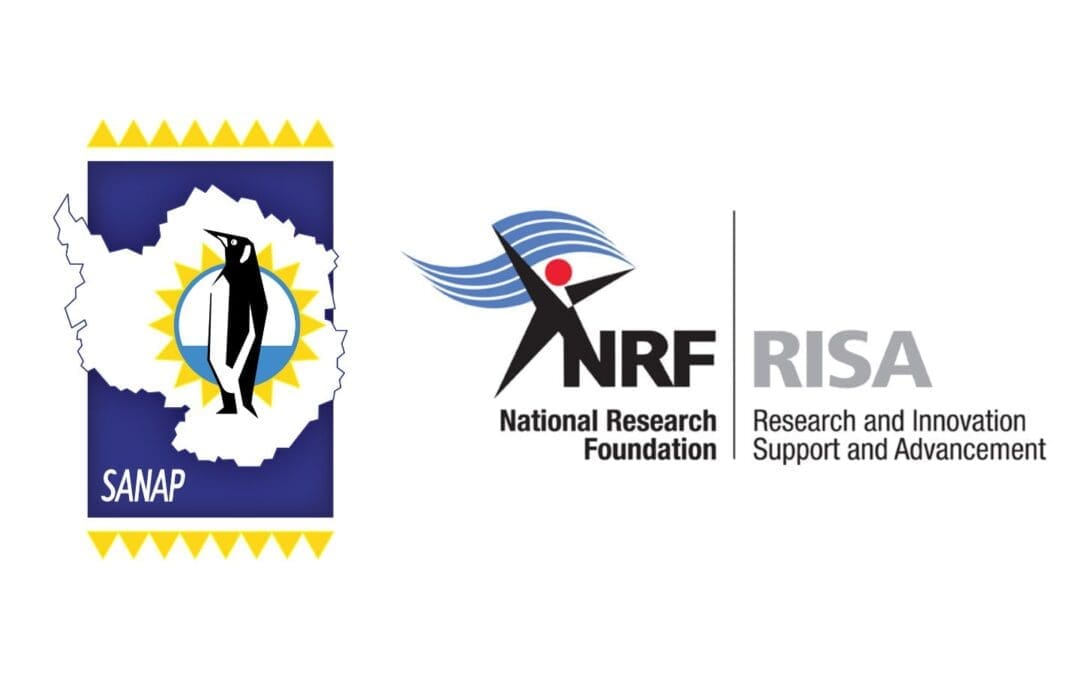
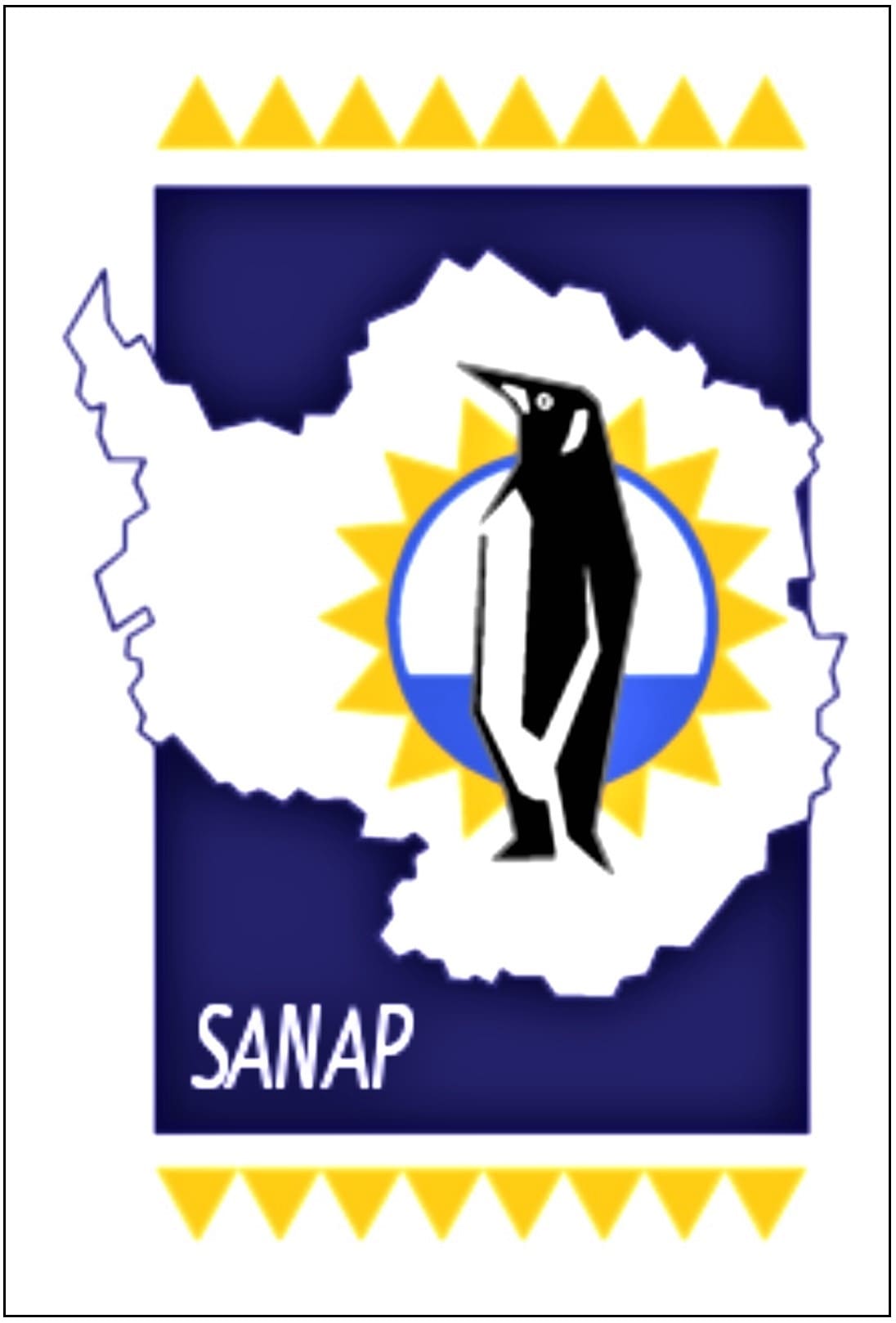


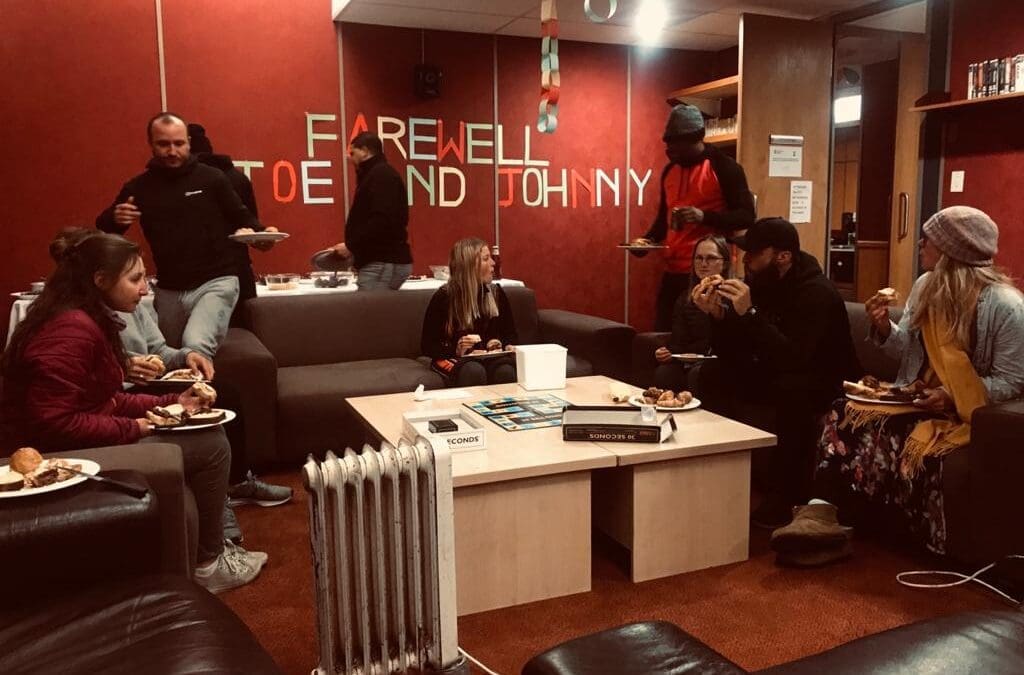

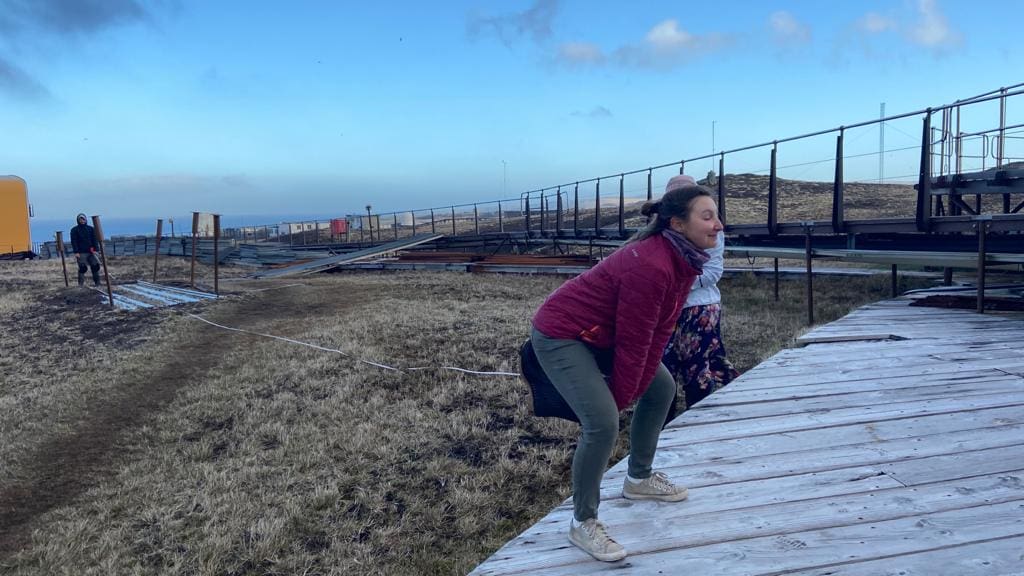

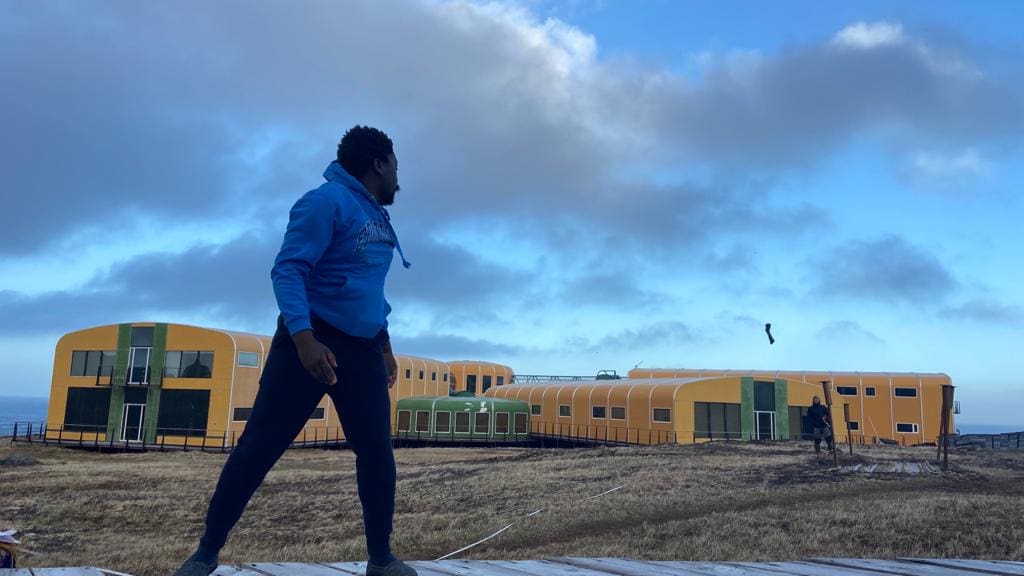
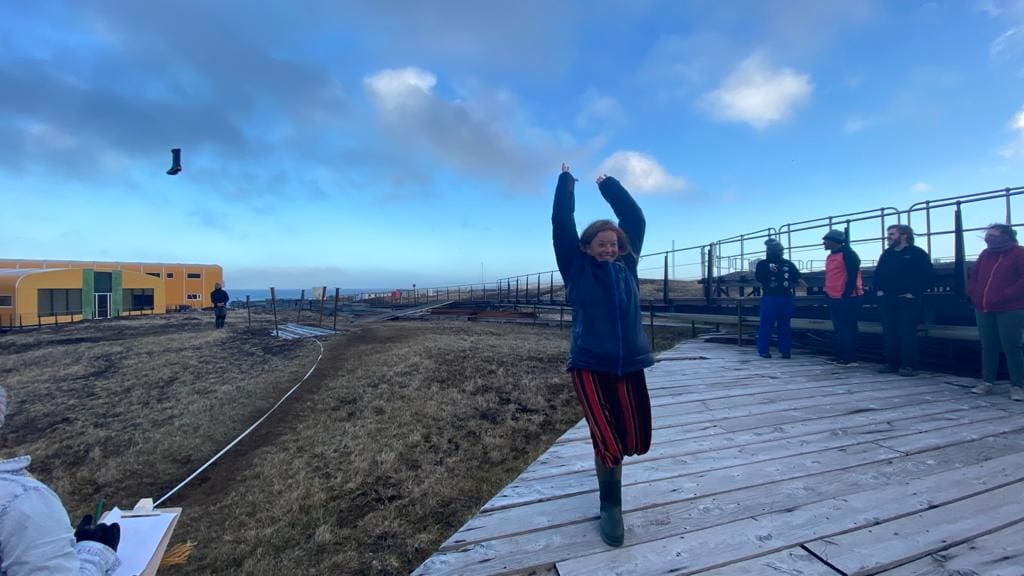
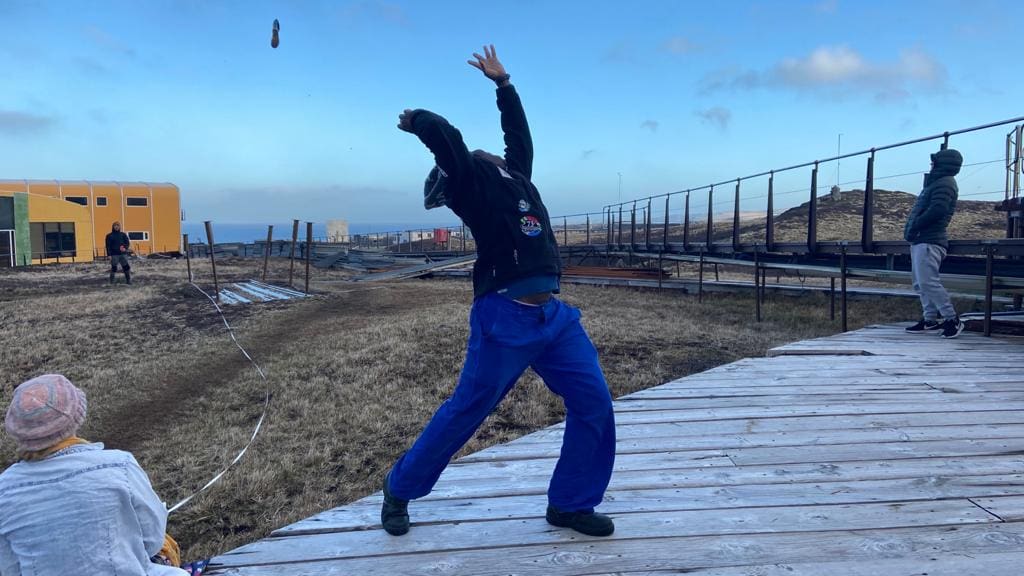
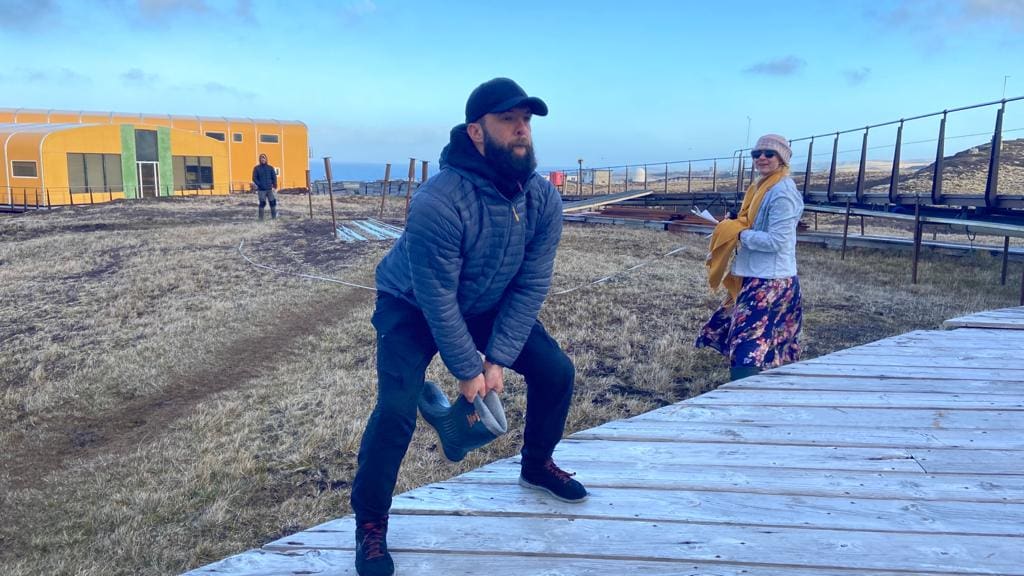
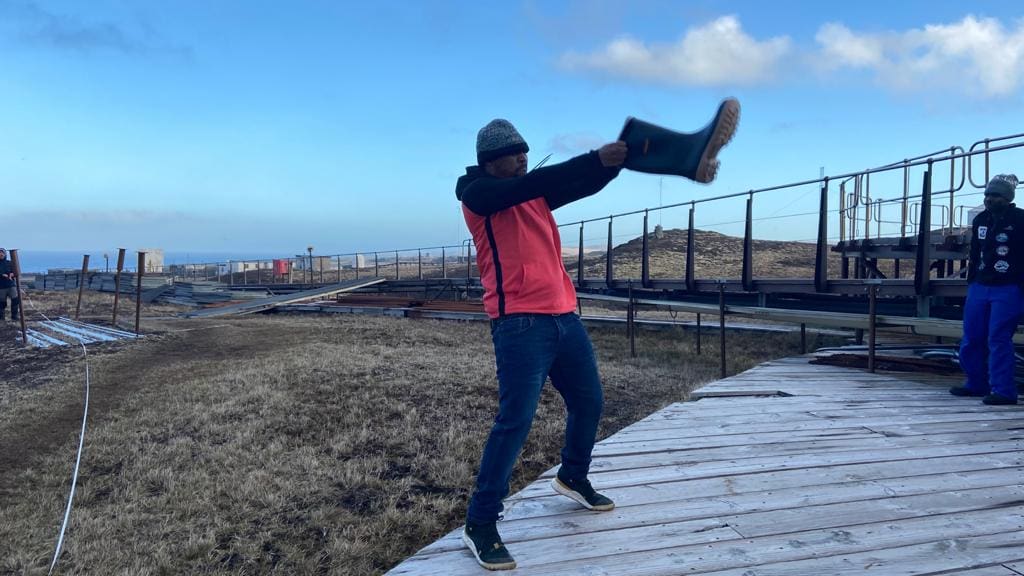 The Marion Overwintering team organised a Boot Throw Competition and a farewell for the Plimsoll Productions film crew John and Joe.
The Marion Overwintering team organised a Boot Throw Competition and a farewell for the Plimsoll Productions film crew John and Joe.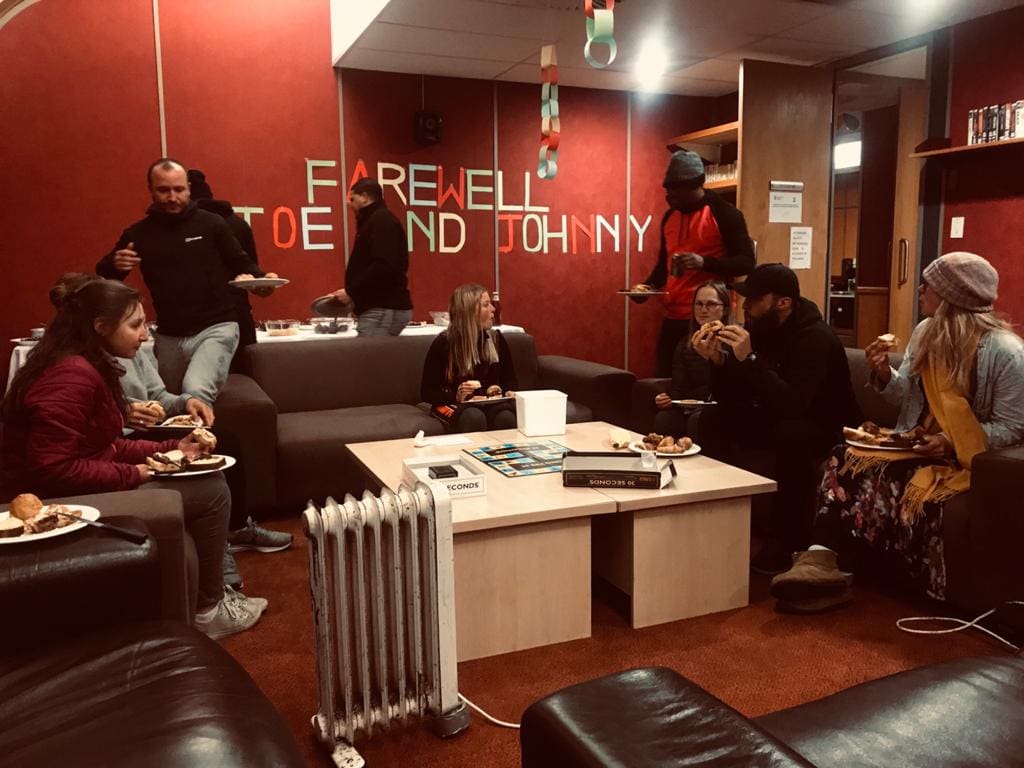
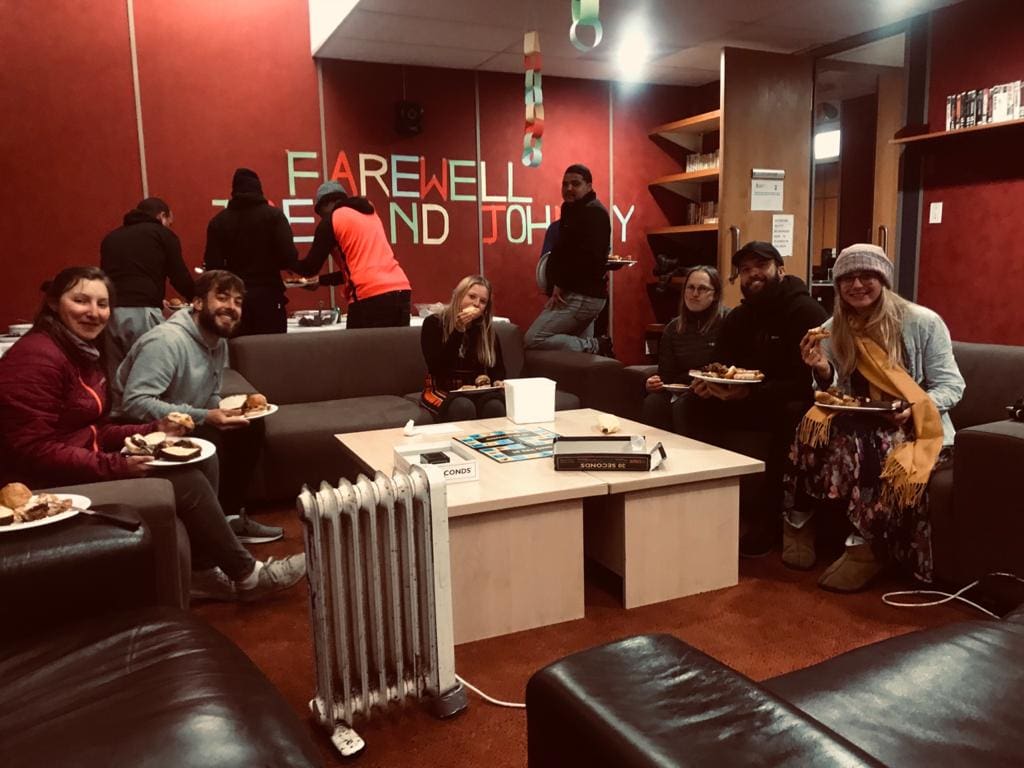
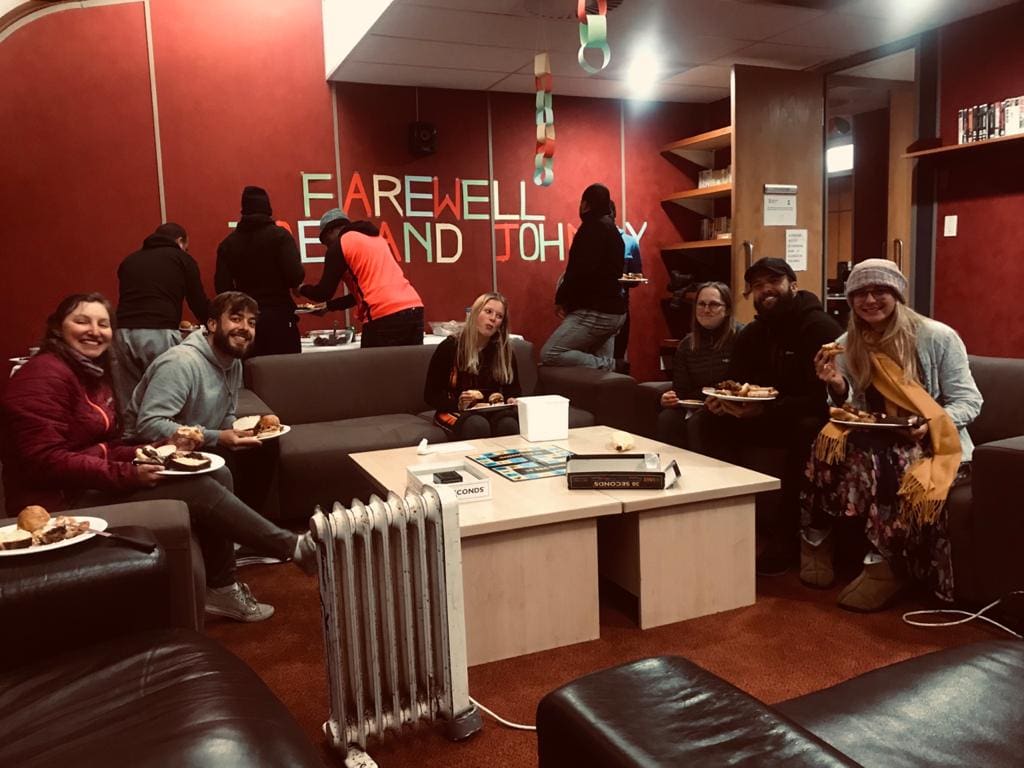
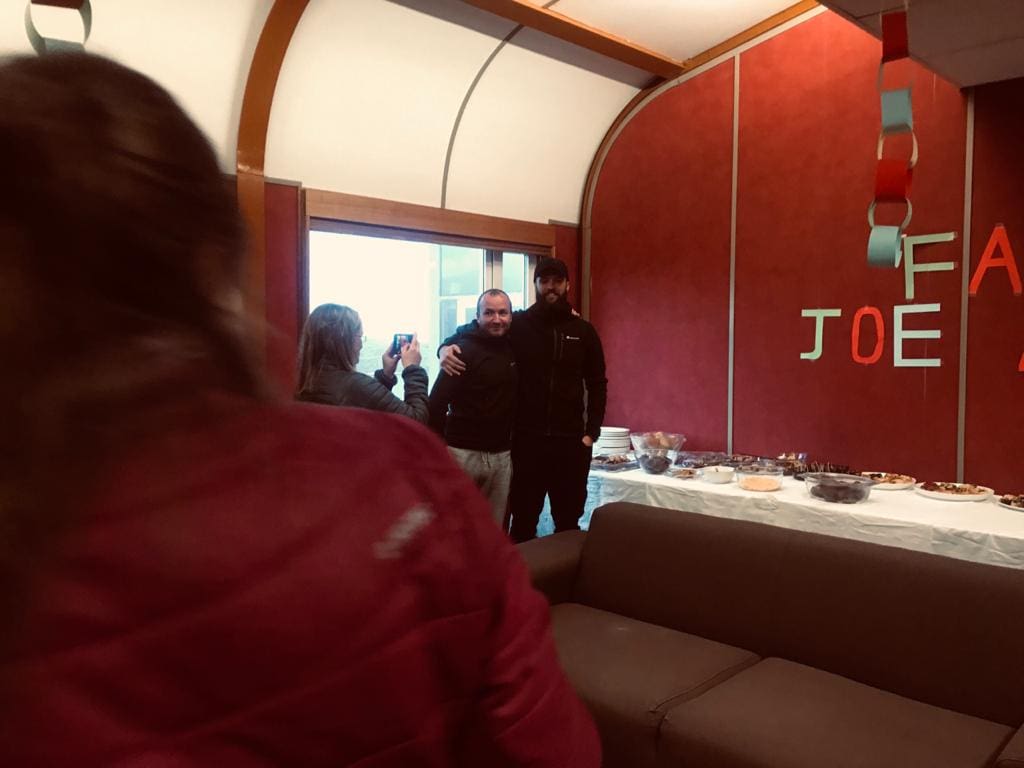
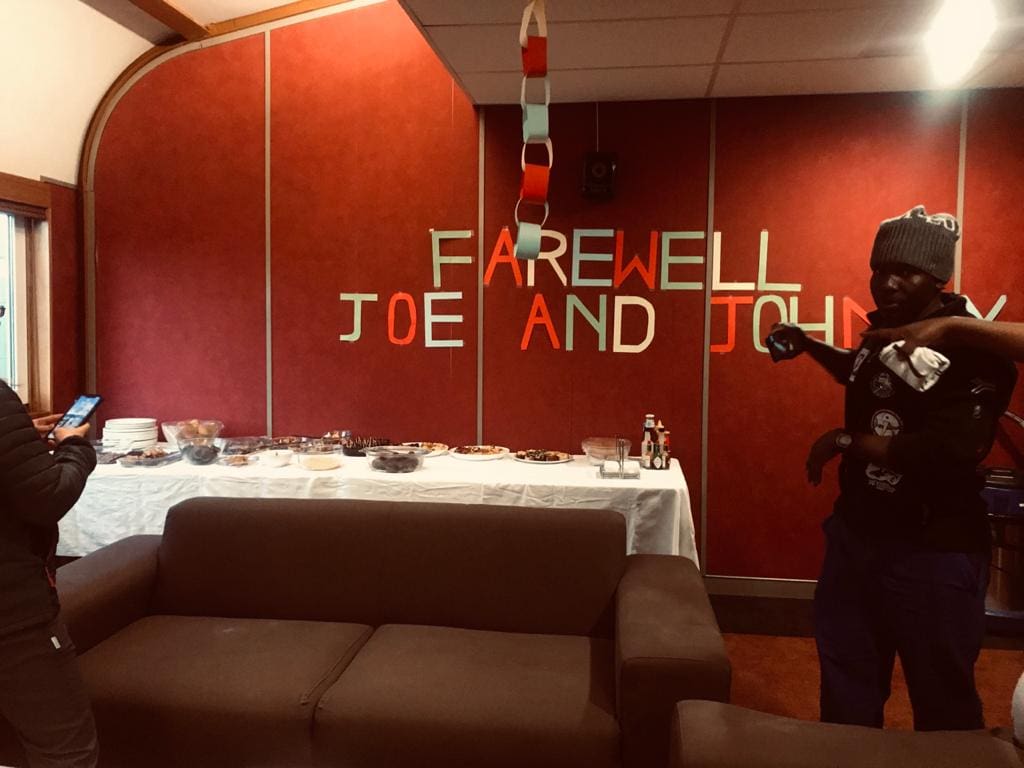
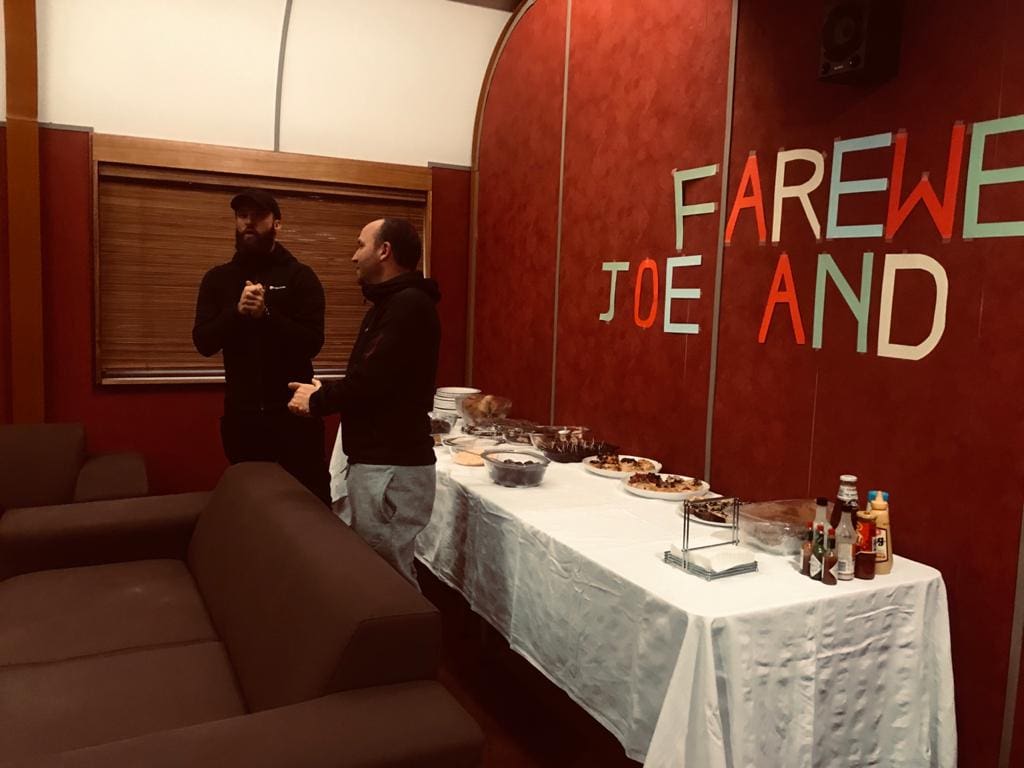 Everyone will be looking forward to this documentary as it will show film makers and scientists collaborate to ensure the continuation of important research projects on Marion Island. There are significant, globally valued long-term science and conservation projects on Marion Island that were interrupted by the COVID19 pandemic and both parties viewed this as an opportunity for collaboration. Read the media release on the
Everyone will be looking forward to this documentary as it will show film makers and scientists collaborate to ensure the continuation of important research projects on Marion Island. There are significant, globally valued long-term science and conservation projects on Marion Island that were interrupted by the COVID19 pandemic and both parties viewed this as an opportunity for collaboration. Read the media release on the 


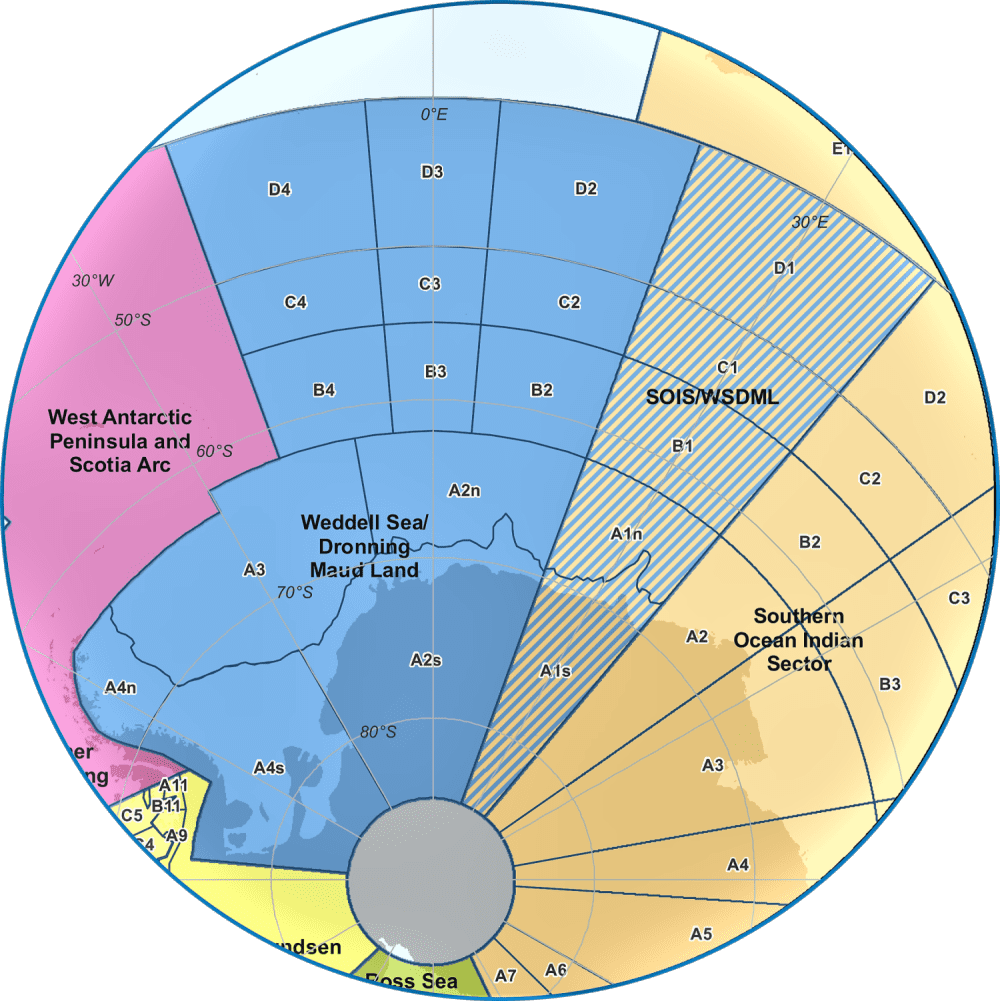 The group facilitates coordinated and standardized observational studies of major physical, chemical and biological variables including their drivers and interactions. This refers to a regional but also a circum-Antarctic approach. The WS-DML WG will contribute to an increase in quality of the science output and strengthen the awareness of the relevance of research in the WS-DML sector of the Southern Ocean through international projects contributing to the
The group facilitates coordinated and standardized observational studies of major physical, chemical and biological variables including their drivers and interactions. This refers to a regional but also a circum-Antarctic approach. The WS-DML WG will contribute to an increase in quality of the science output and strengthen the awareness of the relevance of research in the WS-DML sector of the Southern Ocean through international projects contributing to the 

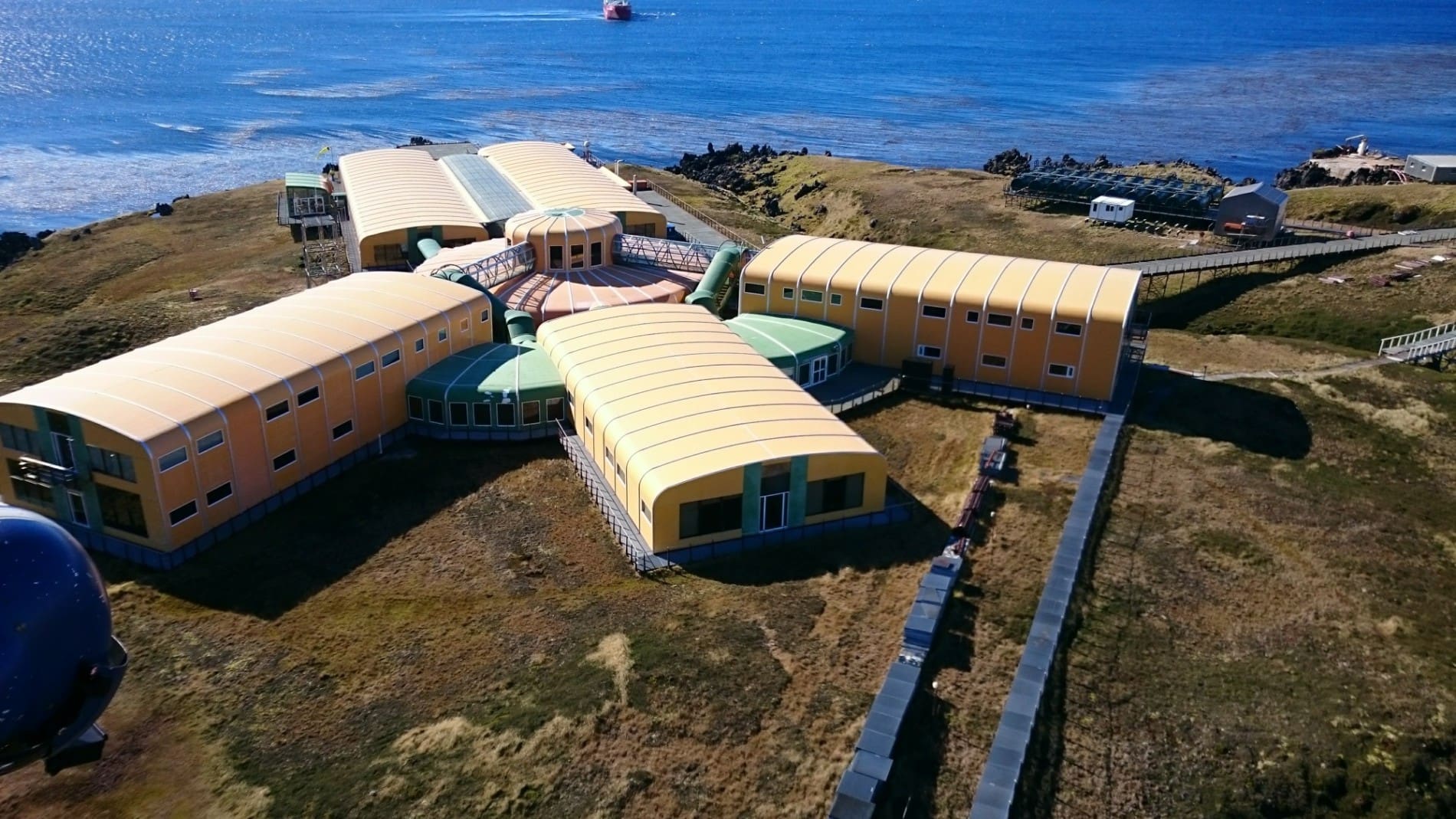 Current engineer at Marion Island is Stephanus Schoeman: “One of the five Marion Island first-timers is SANSA Space Weather Engineer Stephanus Schoeman. He will monitor and maintain systems, report on the status of different instruments, and develop new hardware and software to maximise efficiency, reliability and uptime of the systems.”
Current engineer at Marion Island is Stephanus Schoeman: “One of the five Marion Island first-timers is SANSA Space Weather Engineer Stephanus Schoeman. He will monitor and maintain systems, report on the status of different instruments, and develop new hardware and software to maximise efficiency, reliability and uptime of the systems.” SANSA has again an opportunity for an
SANSA has again an opportunity for an 
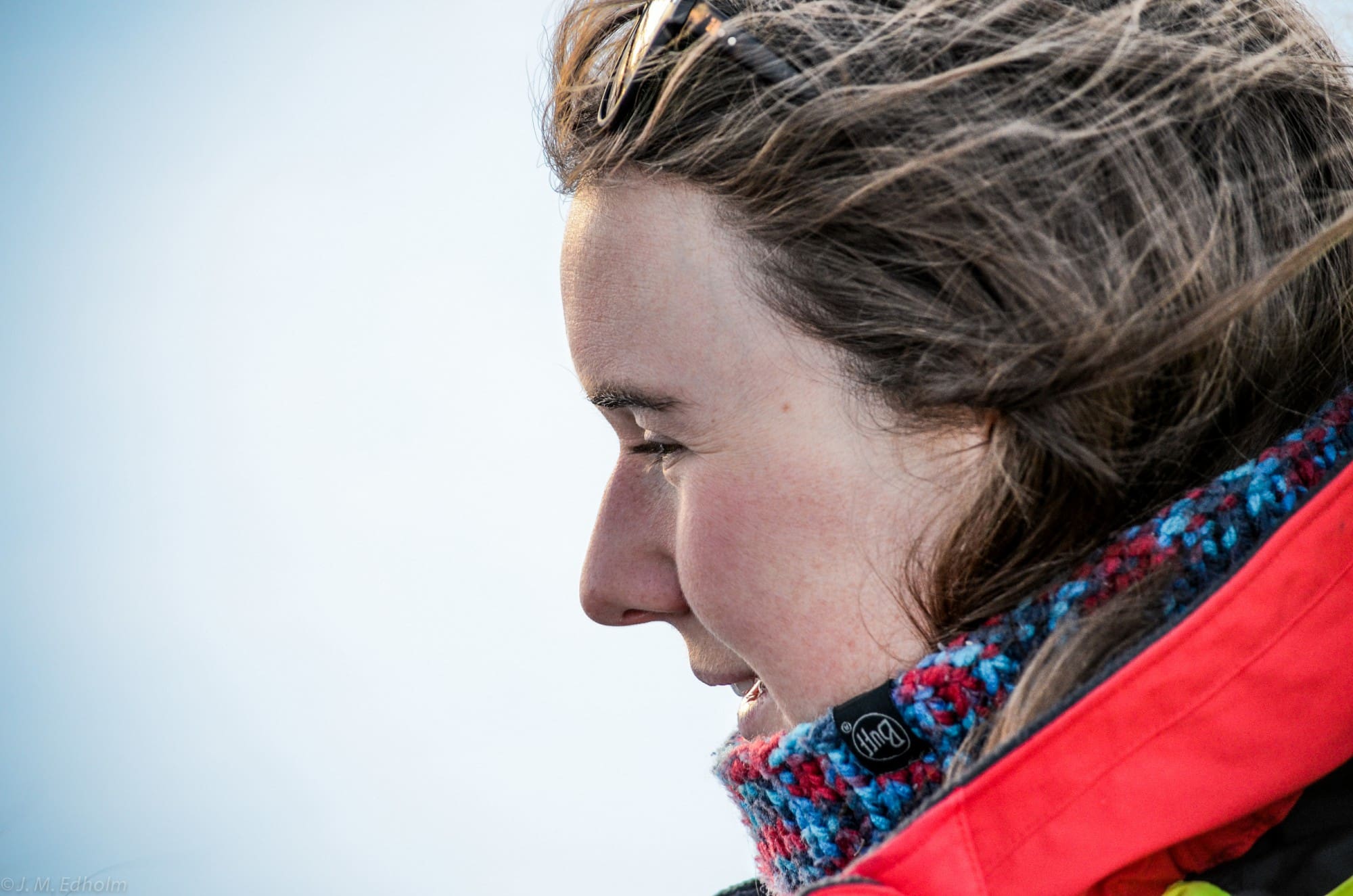 Heather Forrer completed her undergraduate BSc degree at the University of Cape Town (UCT) in 2015, majoring in Ocean and Atmospheric Sciences and Marine Biology. She then went on to complete her Honours degree at UCT in 2016 under the supervision of Dr. Sarah Fawcett where she focused on the nitrogen and oxygen isotopes of nitrate in the summertime Southern Ocean. Her aim was to evaluate the patterns of summertime nutrient utilization across the Atlantic Sector of the Antarctic Zone. Loving everything about Southern Ocean biogeochemical oceanography,
Heather Forrer completed her undergraduate BSc degree at the University of Cape Town (UCT) in 2015, majoring in Ocean and Atmospheric Sciences and Marine Biology. She then went on to complete her Honours degree at UCT in 2016 under the supervision of Dr. Sarah Fawcett where she focused on the nitrogen and oxygen isotopes of nitrate in the summertime Southern Ocean. Her aim was to evaluate the patterns of summertime nutrient utilization across the Atlantic Sector of the Antarctic Zone. Loving everything about Southern Ocean biogeochemical oceanography,  Heather went on to complete a MSc with Dr. Sarah Fawcett and Dr. Angela Knapp (co-advisor, Florida State University (FSU), USA) in 2017 – 2020. Her MSc research focused on a basin-scale approach identifying the drivers of the Indian Sub-Antarctic biological carbon pump, with a special interest in phytoplankton group-specific contributions and the influence of the Island Mass Effect (IME). Heather is now pursuing her PhD at FSU and is taking a deeper look at how the IME enhances carbon export. Her research focuses on the Sub-Antarctic Indian sector as well as Subtropical Pacific, mapping the spatial and temporal carbon export ‘footprint’ of islands across oceans and nutrient regimes.
Heather went on to complete a MSc with Dr. Sarah Fawcett and Dr. Angela Knapp (co-advisor, Florida State University (FSU), USA) in 2017 – 2020. Her MSc research focused on a basin-scale approach identifying the drivers of the Indian Sub-Antarctic biological carbon pump, with a special interest in phytoplankton group-specific contributions and the influence of the Island Mass Effect (IME). Heather is now pursuing her PhD at FSU and is taking a deeper look at how the IME enhances carbon export. Her research focuses on the Sub-Antarctic Indian sector as well as Subtropical Pacific, mapping the spatial and temporal carbon export ‘footprint’ of islands across oceans and nutrient regimes. Born into a family of avid divers, sailors and fisherman, my love for the ocean was instilled in me at a young age. Our dinner table conversations often involve my parents recounting their sailing years on their home-built yacht, reminiscing over past family diving holidays and deciding on which ocean adventure we should embark on next. The vast majority of my childhood holidays were spent wading around rockpools along the South Coast armed with a yellow bucket and red fishing net. My sister and I would collect all the dogfish we managed to coax into our nets and then redistribute them to new rockpool homes based on the size of the fish. Thank goodness the rising tides eventually drove us away and hopefully restored the ecological unrest we most likely caused. This fascination with the small South Coast rockpool ecosystems eventually grew to larger Southeast Asian coral reef biomes in my teenage years. My family immigrated to Vietnam when I was 14, and although moving to a different country was a big culture shock, it opened up a whole new region of marine exploration. Within a couple of months of moving there I became a certified diver and knew that the view from my fogged-up, leaking mask on my first dive had just cemented my future in marine sciences. Upon matriculation, I volunteered for an NGO in southwest Madagascar where I assisted with coral reef studies, looking at both anthropogenic impacts as well as recovery rates from cyclone damage. Knowing that marine sciences was my future, I started my BSc at UCT with a balmy tropical island goal. Well…that was until I met
Born into a family of avid divers, sailors and fisherman, my love for the ocean was instilled in me at a young age. Our dinner table conversations often involve my parents recounting their sailing years on their home-built yacht, reminiscing over past family diving holidays and deciding on which ocean adventure we should embark on next. The vast majority of my childhood holidays were spent wading around rockpools along the South Coast armed with a yellow bucket and red fishing net. My sister and I would collect all the dogfish we managed to coax into our nets and then redistribute them to new rockpool homes based on the size of the fish. Thank goodness the rising tides eventually drove us away and hopefully restored the ecological unrest we most likely caused. This fascination with the small South Coast rockpool ecosystems eventually grew to larger Southeast Asian coral reef biomes in my teenage years. My family immigrated to Vietnam when I was 14, and although moving to a different country was a big culture shock, it opened up a whole new region of marine exploration. Within a couple of months of moving there I became a certified diver and knew that the view from my fogged-up, leaking mask on my first dive had just cemented my future in marine sciences. Upon matriculation, I volunteered for an NGO in southwest Madagascar where I assisted with coral reef studies, looking at both anthropogenic impacts as well as recovery rates from cyclone damage. Knowing that marine sciences was my future, I started my BSc at UCT with a balmy tropical island goal. Well…that was until I met 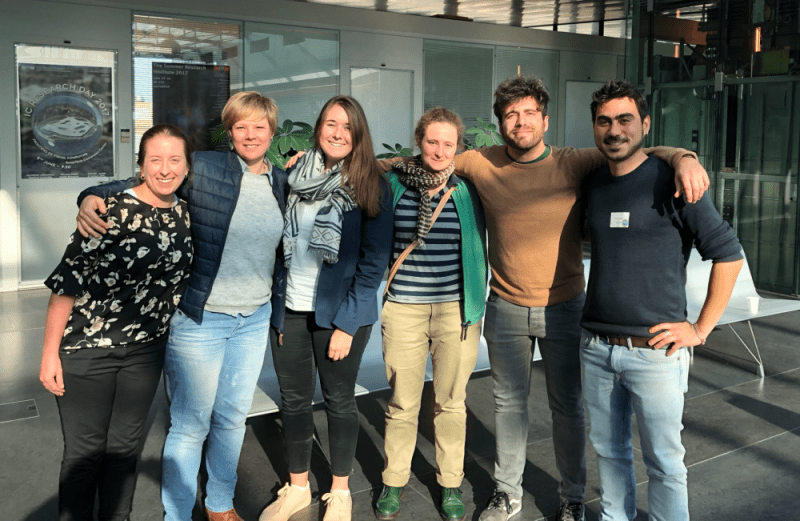
 I love my career in science because of the people and the places. There is such a diverse group of people within the SANAP community and we are all striving towards a common goal – to better understand how the world works. All of our fields are so interconnected and through collaborative efforts, you have the opportunity to work with the most incredible scientists, where you get to share ideas and develop some form of understanding…only to have even more questions! Exploring curiosities and having the freedom of imagination is what drives science forward and when I find fellow scientists who share similar questions, this encourages me to continue pushing boundaries of what we know. My career in science has also taken me to the most amazing places – places I could never dream of going to with another career. From boarding a Russian research vessel in Chile, to sampling the nearshore coastline of the sub-Antarctic island of Kerguelen, to analyzing samples in a lab in the US, to data interpretation at a workshop in the UK to presenting my findings to at a conference in Switzerland… I don’t think there is another career path that would allow me to do all that! Earth Science is a constantly engaging and exciting field to be in. Things never stop… even during a pandemic. The amount of incredible discoveries and papers that have been published in 2020 alone is testament to this. The SANAP community is an impressive force, driving cutting-edge science that is crucial to our global understanding of the past, present and future Earth and is a community I am privileged to be a part of.
I love my career in science because of the people and the places. There is such a diverse group of people within the SANAP community and we are all striving towards a common goal – to better understand how the world works. All of our fields are so interconnected and through collaborative efforts, you have the opportunity to work with the most incredible scientists, where you get to share ideas and develop some form of understanding…only to have even more questions! Exploring curiosities and having the freedom of imagination is what drives science forward and when I find fellow scientists who share similar questions, this encourages me to continue pushing boundaries of what we know. My career in science has also taken me to the most amazing places – places I could never dream of going to with another career. From boarding a Russian research vessel in Chile, to sampling the nearshore coastline of the sub-Antarctic island of Kerguelen, to analyzing samples in a lab in the US, to data interpretation at a workshop in the UK to presenting my findings to at a conference in Switzerland… I don’t think there is another career path that would allow me to do all that! Earth Science is a constantly engaging and exciting field to be in. Things never stop… even during a pandemic. The amount of incredible discoveries and papers that have been published in 2020 alone is testament to this. The SANAP community is an impressive force, driving cutting-edge science that is crucial to our global understanding of the past, present and future Earth and is a community I am privileged to be a part of.
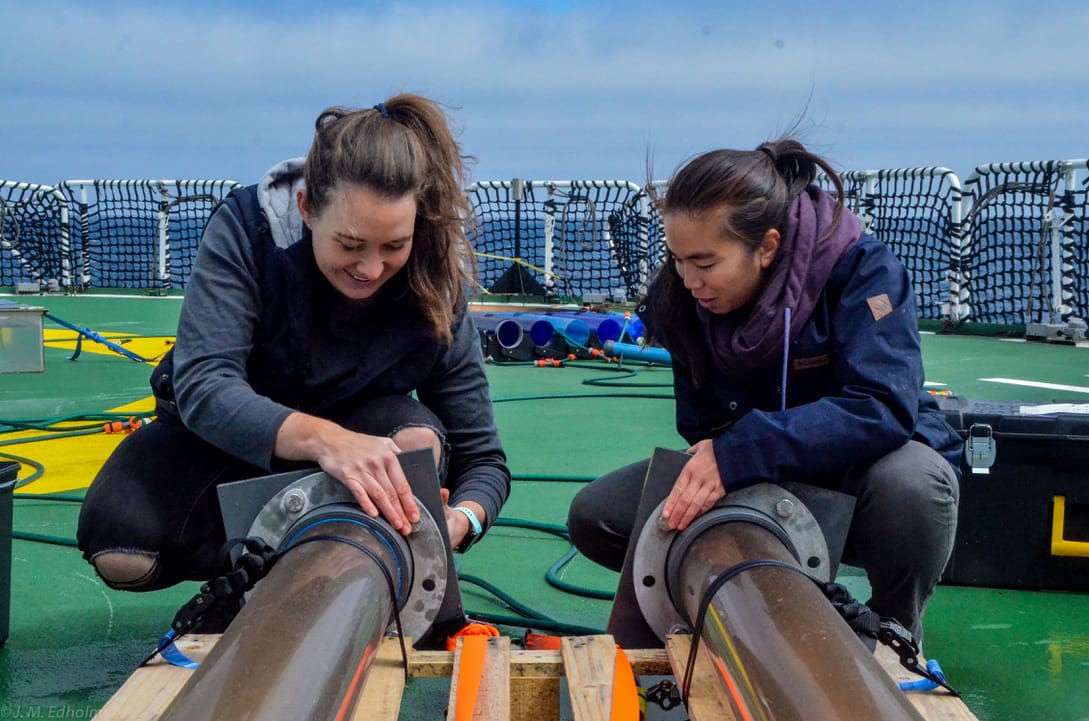
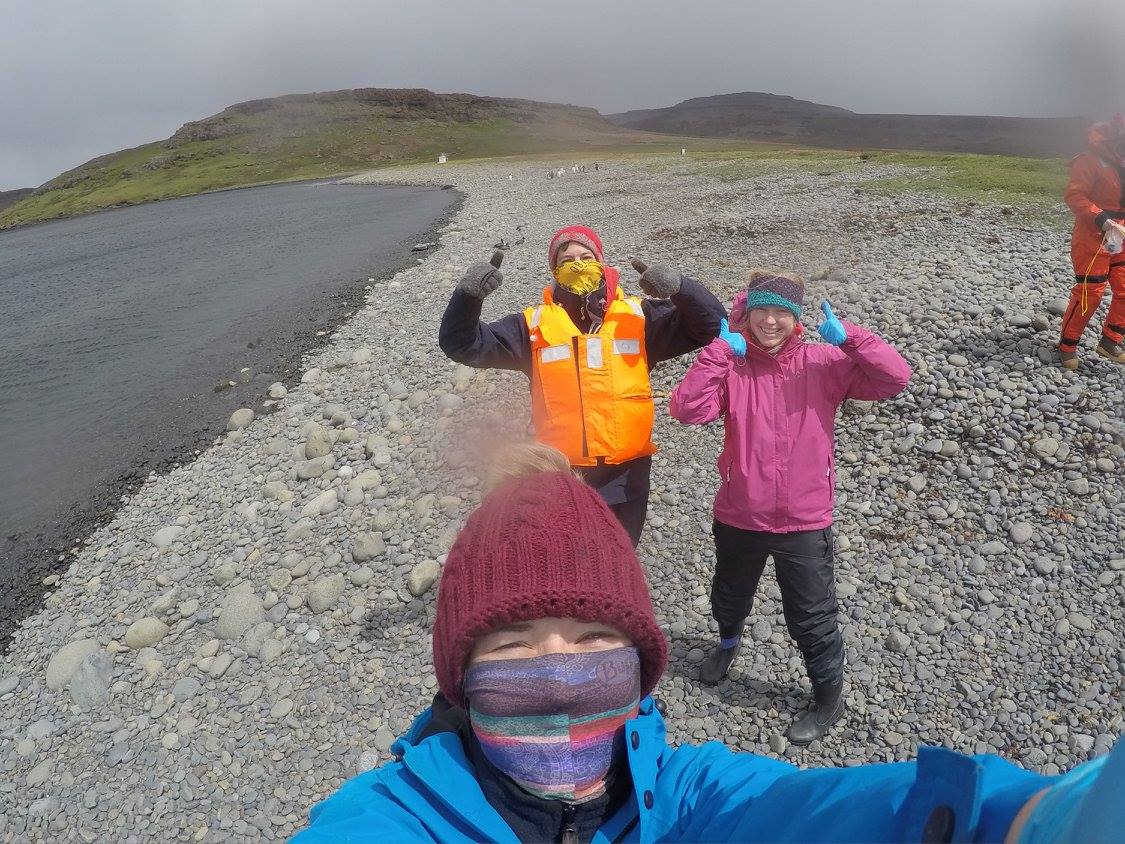 Unlike other career paths, science allows you to follow your passions and ‘immerse’ yourself in different fields. This has allowed me to pursue my interest in Southern Ocean biogeochemical research while being involved in the operational side of Acoustic Doppler Current Profiler (ADCP) and Conductivity Temperature Depth (CTD) sensor deployments and servicing along the South African coastline with the UCT Research Dive Unit. I am happiest when in or on the ocean and to be able to take part in both the research and the operational sides leaves me smiling from ear to ear.
Unlike other career paths, science allows you to follow your passions and ‘immerse’ yourself in different fields. This has allowed me to pursue my interest in Southern Ocean biogeochemical research while being involved in the operational side of Acoustic Doppler Current Profiler (ADCP) and Conductivity Temperature Depth (CTD) sensor deployments and servicing along the South African coastline with the UCT Research Dive Unit. I am happiest when in or on the ocean and to be able to take part in both the research and the operational sides leaves me smiling from ear to ear.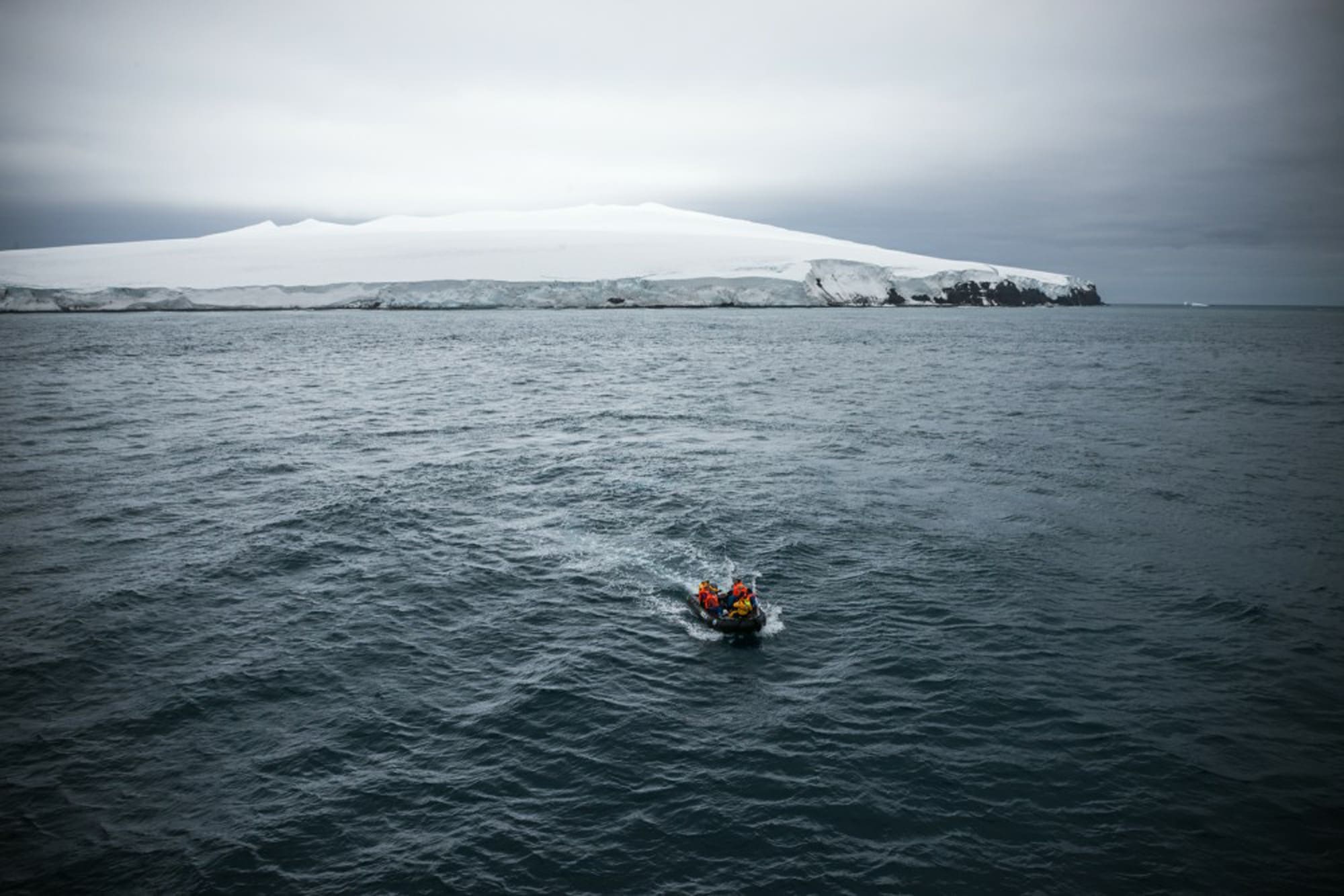

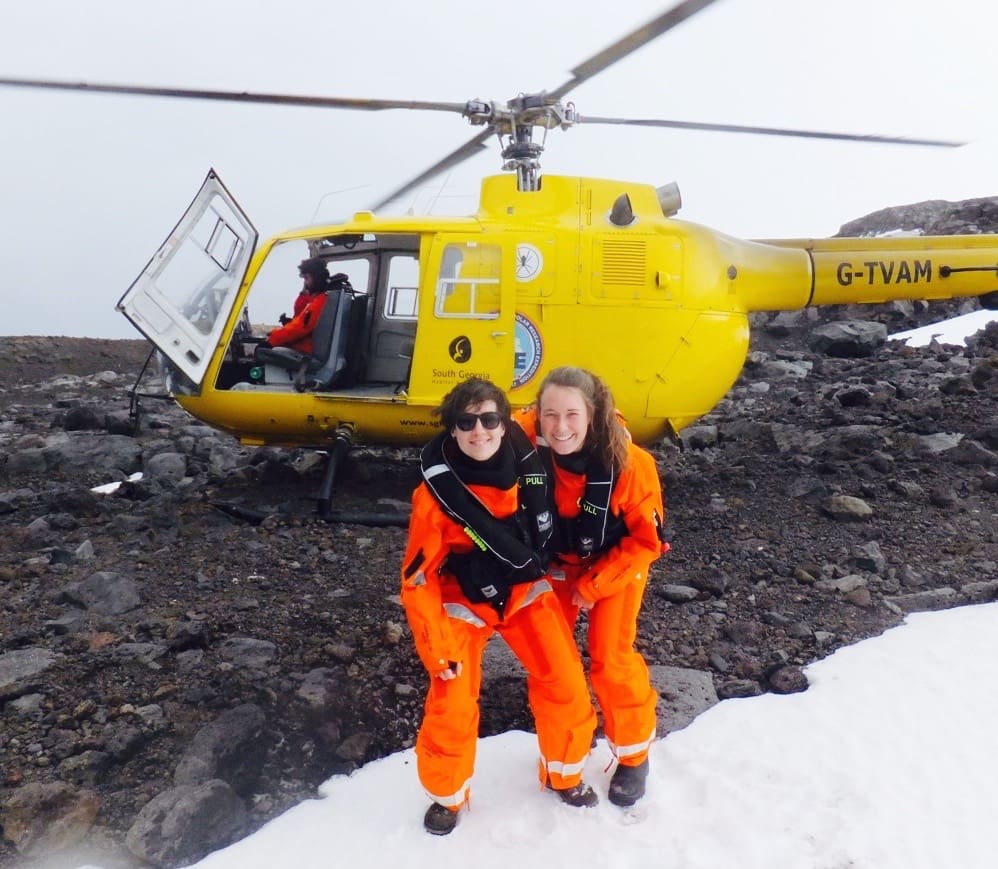 Something that I find incredibly special about a career in science is it is a career your family can be involved in and get excited about. My family have been an amazing source of support throughout my scientific career. They have helped me label over 15,000 sample bottles (the Forrer family bottle labelling production line is something to behold!), load ships, move -80 freezers from East Pier to UCT and create figures for my theses. They have also met me in Switzerland and Australia after workshops or cruises and have read all of my work from beginning to end. Whenever I phone my dad, he always asks “is the ship in town?” and if the answer is “yes” he follows up with “how many bottles do we have to label, when are we loading the ship, how many trailers do we have to tow?” Although I’m still not 100% convinced my parents know exactly what I do, and often hear my mom describing my work to her friends as “the study of whale food that is saving the planet from climate change”, I definitely couldn’t have made it this far without their support, encouragement and enthusiasm.
Something that I find incredibly special about a career in science is it is a career your family can be involved in and get excited about. My family have been an amazing source of support throughout my scientific career. They have helped me label over 15,000 sample bottles (the Forrer family bottle labelling production line is something to behold!), load ships, move -80 freezers from East Pier to UCT and create figures for my theses. They have also met me in Switzerland and Australia after workshops or cruises and have read all of my work from beginning to end. Whenever I phone my dad, he always asks “is the ship in town?” and if the answer is “yes” he follows up with “how many bottles do we have to label, when are we loading the ship, how many trailers do we have to tow?” Although I’m still not 100% convinced my parents know exactly what I do, and often hear my mom describing my work to her friends as “the study of whale food that is saving the planet from climate change”, I definitely couldn’t have made it this far without their support, encouragement and enthusiasm.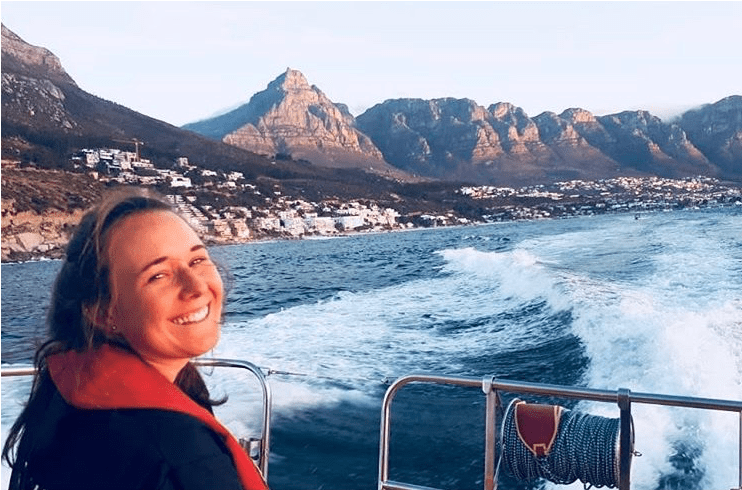 To end, I thought I should share three tips for anyone about to embark on their scientific career:
To end, I thought I should share three tips for anyone about to embark on their scientific career: With that, I would like to acknowledge and thank my
With that, I would like to acknowledge and thank my 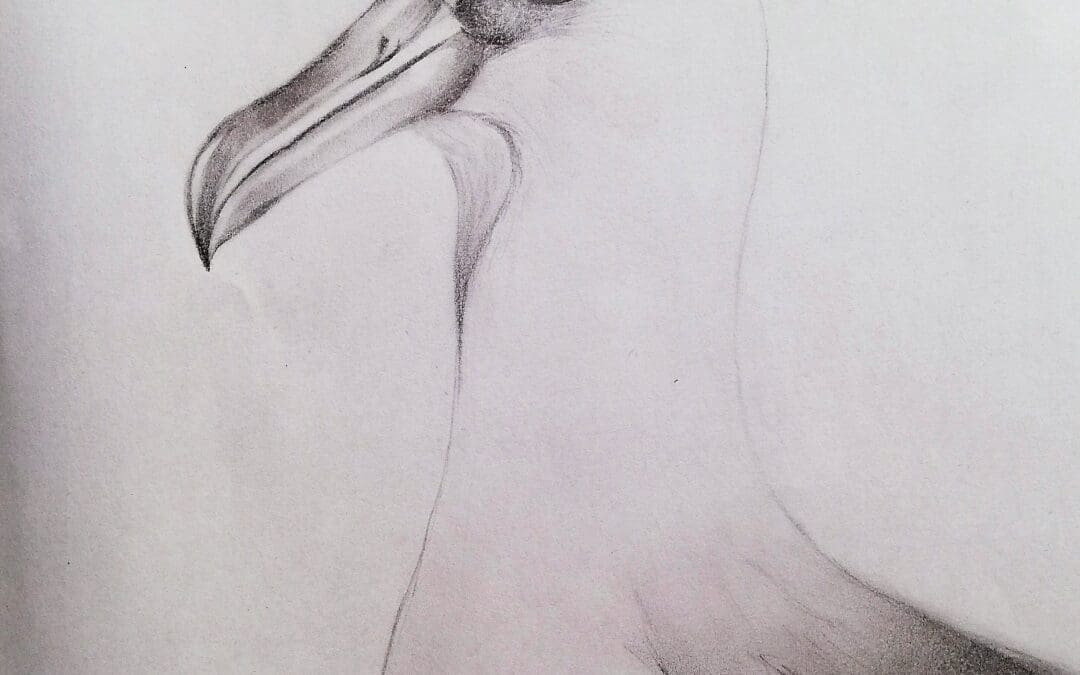
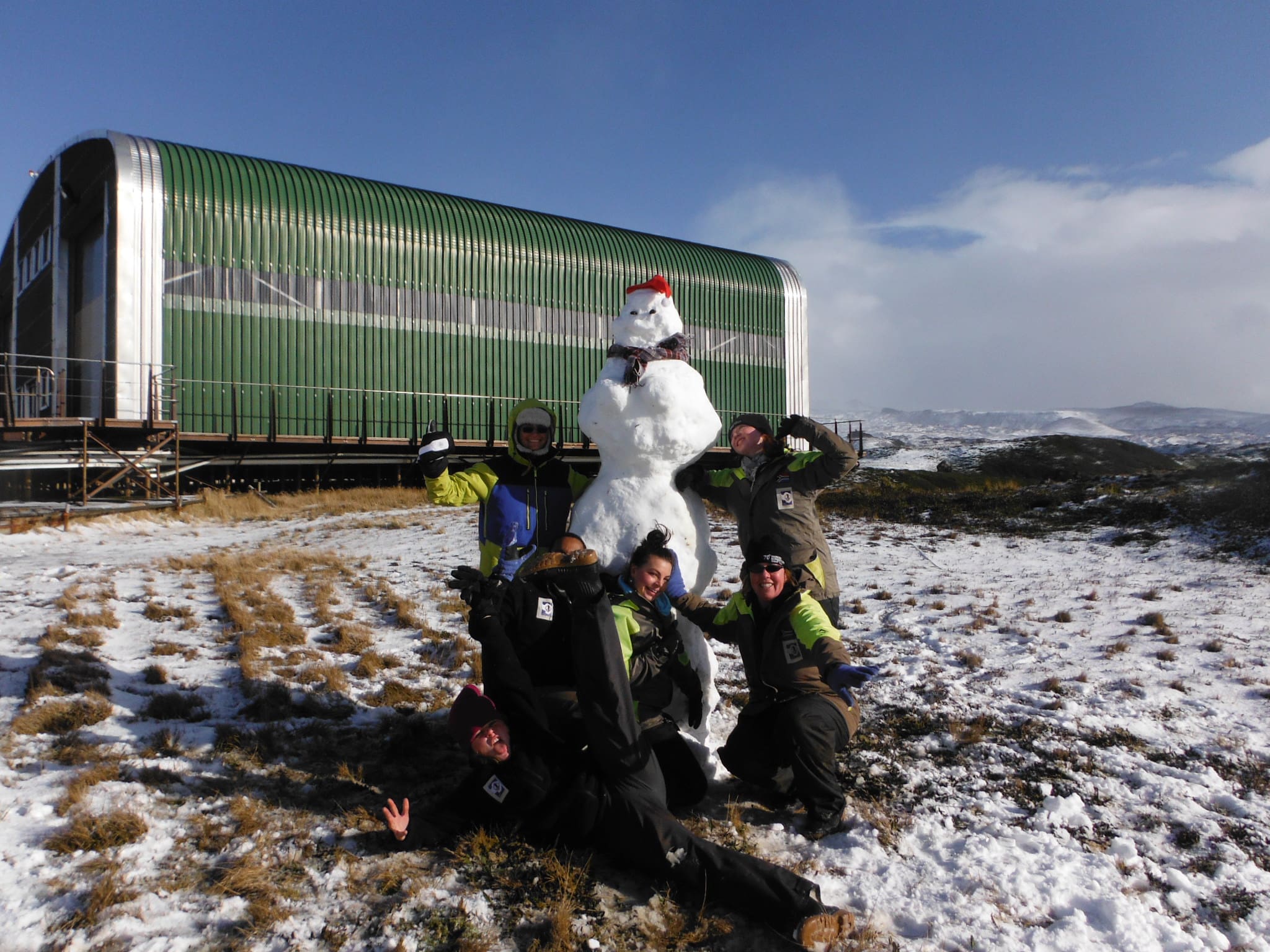
 Mariëtte Wheeler – regular freelancer for Antarctic Legacy of South Africa was born and bred a proud Pretorian girl. But my passion for the ocean developed throughout my childhood as my grandparents lived in Knysna. In my late teens I found myself staring at the ocean, wondering what it looks like beyond the horizon.
Mariëtte Wheeler – regular freelancer for Antarctic Legacy of South Africa was born and bred a proud Pretorian girl. But my passion for the ocean developed throughout my childhood as my grandparents lived in Knysna. In my late teens I found myself staring at the ocean, wondering what it looks like beyond the horizon. For the second year of my study I had a field assistant Prideel Majiedt on Marion Island and I supervised from here. One of my best round island trips was during the take-over of 2005 with Prideel(right), Marienne and John Cooper. John and I summited a few of the Marion hills. In 2006 I went for take-over to conduct more research on the Wandering Albatrosses.
For the second year of my study I had a field assistant Prideel Majiedt on Marion Island and I supervised from here. One of my best round island trips was during the take-over of 2005 with Prideel(right), Marienne and John Cooper. John and I summited a few of the Marion hills. In 2006 I went for take-over to conduct more research on the Wandering Albatrosses. On 27 February 2013, I received a phone call from Bruce Dyer asking if I would be interested to go to Marion Island as their one birder had withdrawn from the team. I had 24 hours to decide! Fortunately the timing was perfect as my contract with EWT was until the end of February. In April 2013 I sailed again to Marion Island as Department of Environment Affairs: Oceans and Coasts birder. What an amazing feeling to see Marion Island again! I therefore had the opportunity to travel on both the SA Agulhas and SA Agulhas II and to live in both the old base and the new base. My previous year on the island was during the construction time, so as a member of M70 I first experienced the isolation of only seeing the “Red Taxi II” a year later. I treasure memories of braai evenings in the braai room with its beautiful views, theme parties and unique hut radio communication.
On 27 February 2013, I received a phone call from Bruce Dyer asking if I would be interested to go to Marion Island as their one birder had withdrawn from the team. I had 24 hours to decide! Fortunately the timing was perfect as my contract with EWT was until the end of February. In April 2013 I sailed again to Marion Island as Department of Environment Affairs: Oceans and Coasts birder. What an amazing feeling to see Marion Island again! I therefore had the opportunity to travel on both the SA Agulhas and SA Agulhas II and to live in both the old base and the new base. My previous year on the island was during the construction time, so as a member of M70 I first experienced the isolation of only seeing the “Red Taxi II” a year later. I treasure memories of braai evenings in the braai room with its beautiful views, theme parties and unique hut radio communication.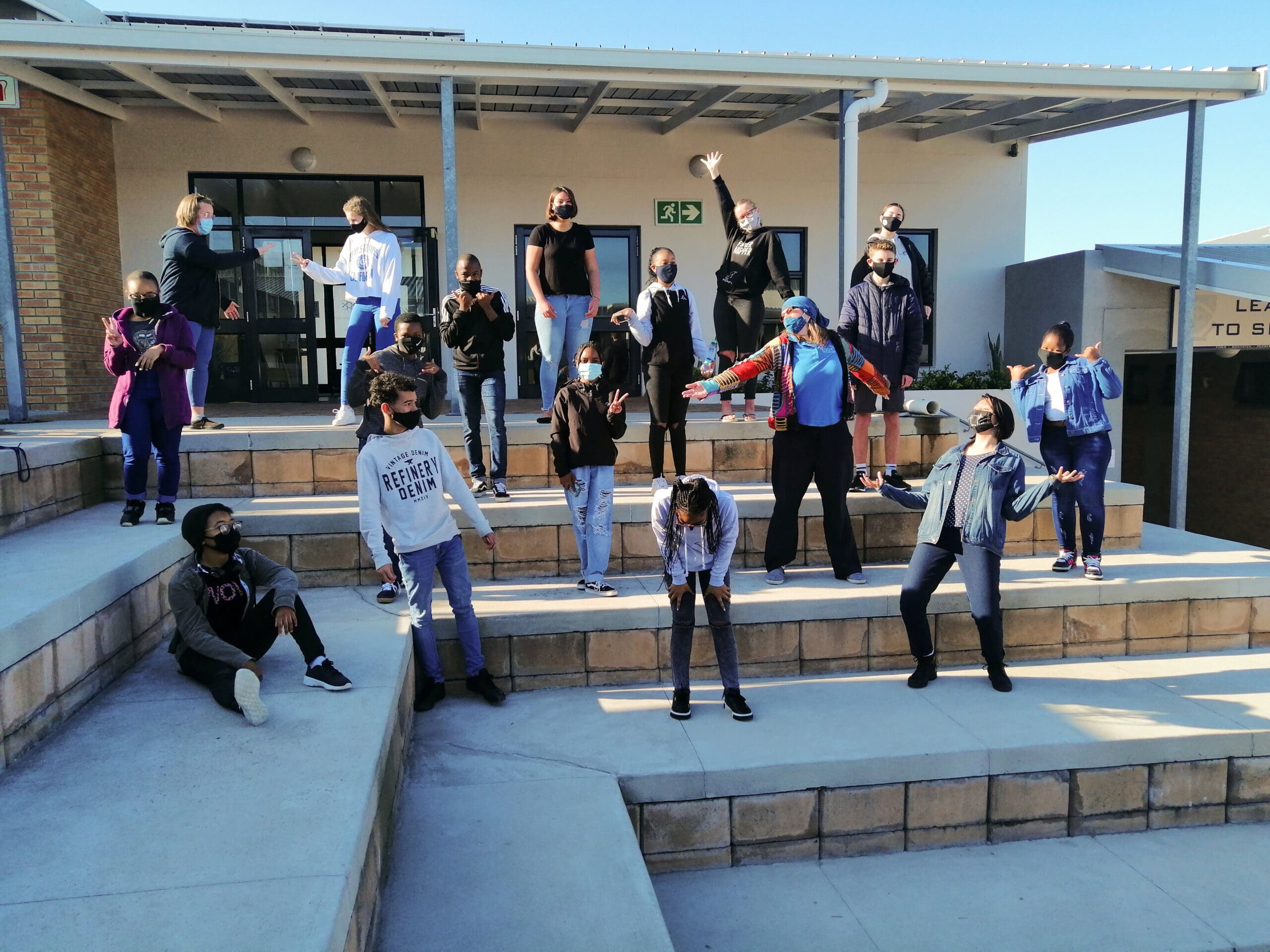 In 2016 I took up a post at
In 2016 I took up a post at 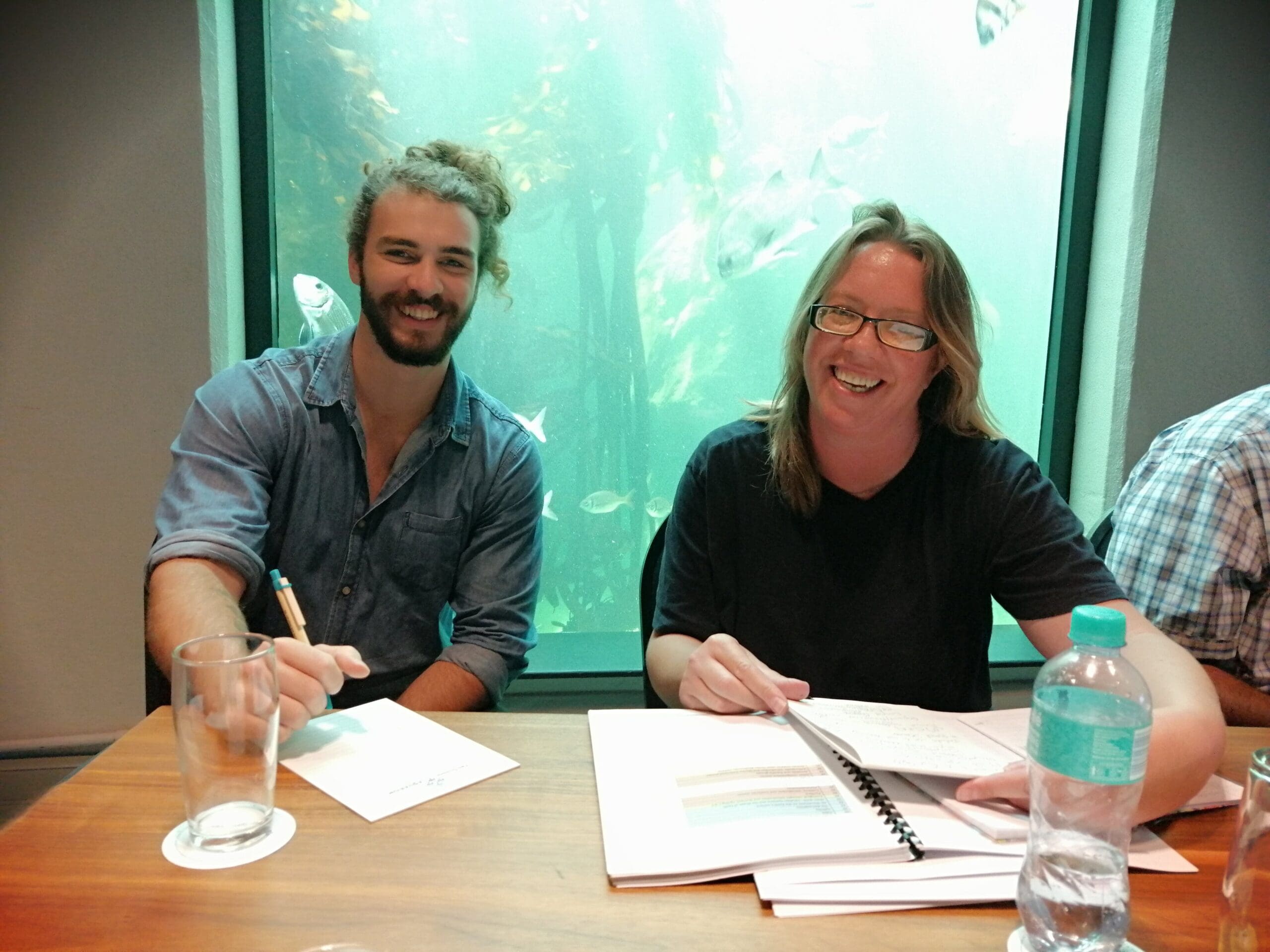 From 2020 PHA is one of the 6 nodal schools for the new Gr 10 to 12 subject Marine Sciences, in collaboration with Two Oceans Aquarium (the writers of the curriculum). I am now the departmental head of Marine Sciences, with Shaun Seaward as colleague. I am also teaching Life Sciences. Recently my learners were involved in the first World Albatross Day. Unfortunately due to COVID, plans that John Cooper and I had to get the entire school involved could not realise. With the international Great Albicake Bake Off as inspiration, I asked my learners (who were all still in lockdown) to make, bake, draw or paint anything creative provided that there was at least one albatross on. In this way they all learned more about albatrosses and enjoyed being creative.
From 2020 PHA is one of the 6 nodal schools for the new Gr 10 to 12 subject Marine Sciences, in collaboration with Two Oceans Aquarium (the writers of the curriculum). I am now the departmental head of Marine Sciences, with Shaun Seaward as colleague. I am also teaching Life Sciences. Recently my learners were involved in the first World Albatross Day. Unfortunately due to COVID, plans that John Cooper and I had to get the entire school involved could not realise. With the international Great Albicake Bake Off as inspiration, I asked my learners (who were all still in lockdown) to make, bake, draw or paint anything creative provided that there was at least one albatross on. In this way they all learned more about albatrosses and enjoyed being creative. 